
Apply now!
AXPOW Platinum Plus VISA Credit Card. Rewarding for you and us.
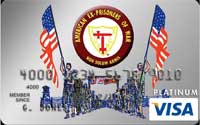

|
Solemn Honor From Gallant Steeds
by Alice A. Booher

Horses have been an integral part of military history for thousands of years, in and out of battle. For the most part, many of these practices have been phased out. (Although it should be noted that for the first time since WWII and the cessation of the Cavalry, at the beginning of Operation Enduring Freedom American soldiers on horses were inserted into the mountains of Northern Afghanistan.)
However, one of the most familiar and compelling rituals involving horses endures: their visually haunting participation in a Full Military Honors funeral. The elegant precision, memorable beauty and professional majesty of these horse units deserve further investigation.
Most prominent are the members of the Caisson platoon of the 3d United States Infantry "The Old Guard." Located at Joint Base Myer/Henderson Hall (Ft. Myer), The Old Guard is a remarkable volunteer unit, the Army�s oldest infantry regiment, dating to 1784. It is responsible for military ceremonies at The White House, the Pentagon and at national memorials; maintains the 24/7 vigil at the Tomb of the Unknowns; and serves as mounted escort for funerals at Arlington National Cemetery.
Utilization of the Caisson Platoon is an honor reserved for officers of the U.S. military who are eligible for burial or inurnment] The horses are saddle-broken when received, but the soldiers are infantrymen, not usually trained horsemen; both undergo rigorous training.
A McClellan saddle is used, and both rider and horse must maintain erect posture and high professional standards.
The soldiers learn to prepare and clean the saddle, stall and horse, shine 314 pieces of brass each morning, and maintain unique ceremonial tack and harness.
Each horse gets a daily pre-dawn shower: some love it, some merely tolerate it, and some consider it a time to �horse around.� The soldier dries, grooms and prepares his horse to be hitched up to the caisson, taking several hours (starting at 0400 hours). The Army has a designation of Caisson Soldiers with the Additional Skill Identifier D2 - Army Horseman. The unit is relatively self-supporting and even trains soldiers as farriers (skilled combination of a blacksmith and part veterinarian for all those equine hoof problems). Full vet facilities are available close-by.
Soldiers enjoy long but apparently fulfilling hours in their weekly alternating stints, taking care of the horses and the equipment, and ceremonial duties. Most horses live at Ft. Myer but some rest during off-weeks at nearby Ft. Belvoir. The platoon is comprised of 4 riding teams, roughly 50 service men and women, and about 60 horses, all observed by a watchful stable-resident black tabby cat called Rihanna.
The 5 black caissons, built in 1918, and used for 75mm cannons, were originally equipped with ammunition chests, spare wheels, and tools. Today these have been removed and replaced with the flat deck on which the casket rests. For cremains, the urn may be placed in an elevated niche at the casket back which is covered by the flag. For casket security, they are currently replacing brass tabs; the paint and other accoutrements are kept immaculate.
The two on-duty teams at any given time consist of seven horses, six of whom pull the caisson. Horses, matched gray (or �white�) or black (or dark brown), used to be purchased or bred by the Army, but now come through donations (e.g., 7 elegant Spanish Riding Stable Lipizzaners were given to the Army in 1981 by Temple Smith, Jr. of IL). Each team has one Section Horse; two Lead Horses (second most experienced); Two Swing Horses (least experienced, in the middle); and Two Wheel Horses (most experienced, nearest the caisson, acting as brakes, (e.g., Lee and Grant tried to stop a runaway caisson and were injured some years ago).

All seven are saddled, but only the three on the left side and the Section Horse (which is the guide horse) are ridden. In war, the three without mounts would have held supplies, feed or were intended as replacements. The horses may mischievously roll their eyes or nip at one another while being prepared, but once hooked up and work starts, they are categorically all business.
One of the oldest and most evocative of military traditions in a full honor funeral is that of the rider less, caparisoned (�cap� or ornamented horse).
It is said that this dates back to the time of Genghis Khan, the saddle being empty and the rider�s boots reversed in the stirrups, signifying that the service member would never ride again (the ancient ceremony also involved sacrificing the horse for burial alongside the deceased warrior). The riderless horse is now authorized for Army and Marines burials for those of the rank of COL and above. A service member escort carries the deceased�s colors with the unit.
Riderless horses participated in the funerals of George Washington and Abraham Lincoln, according to various histories and The Washington Post in February 2016. Other sources note that Lincoln was the first to have a caparisoned horse, although Tobias Lear, Washington�s personal secretary recorded that Washington�s horse was part of his funeral. Similarly, Zachary Taylor�s personal horse, Old Whitey, was in his funeral procession.
Perhaps the best known equine member of the Caisson Platoon of the 3rd U.S. Infantry Regiment (The Old Guard) was the coal black Morgan-American Quarter Horse Cross named for GEN John J. (Black Jack) Pershing. Foaled in KS, January 19, 1947, he was said to be �sleek, beautiful, fiery and sometimes hard to manage�.
He arrived as a 6-year old at Ft. Myer from the Ft. Reno, OK cavalry remount station. He was the last of the Quartermaster-issue horses branded with the U.S. Army brand on his left shoulder and his Army serial number 2V56 on the left side of his neck. Black Jack served in more than a thousand funerals (mostly at Arlington), but is perhaps best known as the compelling rider-less horse at state funerals including John F. Kennedy (1963), Herbert Hoover (1964), Lyndon B. Johnson (1973), and General Douglas MacArthur (1964).
The horse unit and caisson were also used for Washington portions of the Franklin Delano Roosevelt funeral in 1945, and the Dwight David Eisenhower funeral in March 1969.
For the mourning, assassination-stunned nation watching the Kennedy funeral on TV, Black Jack and his remarkable spirit would symbolize the event�s aura. According to an article by a Pentagram reporter, on the day of that funeral, his handler (who had been with him in 70 funerals), said he was particularly unruly and nearly uncontrollable. Spooked by a loud noise as a caisson wheel snagged on a large steel grate as they passed the Treasury Department, the horse also stepped on the handler�s foot at St. Matthews Cathedral, and remained agitated throughout the procession.
One of his greatest admirers was Jacqueline Kennedy, who asked the Secretary of the Army if she could purchase him when he retired. Her request was acknowledged; she later received his caparison, which included his saddle, bridle, saddle blanket, sword, boots and spurs. However, when not working, the horse was known in the barn as a �ham,� putting on a show when a child or camera was present. Thousands swarmed to his fan club and even baked him his favorite butter pecan birthday cakes, fed him sugar cubes and generally fussed over him to his delight. Richard Nixon sent him a birthday card.
He retired in 1973, his health deteriorating. Following his death in February 1976, some 400 people attended the funeral. His cremains were carried on the caisson he had led so many times. He was buried with Full Military Honors on Summerall Field, a parade site usually reserved for senior retirements, near the flagpole, with a special horseshoe configuration of shrubs and a bas-relief headstone. Several books were written about him including Robert Knuckle�s Black Jack: Americans Famous Riderless Horse (2002).
The riderless horse tapped for Ronald Reagan�s funeral in June 2004 was Sergeant York, a black 15-hands Standardbred gelding with bright eyes and a roached mane (making him look a bit like Opie Taylor on The Andy Griffith Show, apologies to Ron Howard).
He started out life with the insipid name of Allaboard Jules who �tried hard� but had had a rather lackluster career until 1996 (in 3 years, won 5 of 23 starts) at Freehold Raceway in NJ. Donated to the Army in 1997, he had an undeniably engaging personality, but at the first, he was said to be �more Gomer Pyle than George Patton.�
|
Since he was stabled with other horses with historically relevant names such as the two brothers Grant and Lee, who had already made themselves known for excellence, the Old Guard soldiers gave Jules a much more suitable name (for the WWI hero Sgt. Alvin C. York). The skinny new arrival needed to bulk up a bit. In describing his stable behavior, it was said that whenever there were visitors, he would stick his head into the aisle and shake it in circles to get attention for a pat.
His initial goofiness morphed into a more enduring gentle charm, although he (like many of his stablemates), continued to mug for the cameras. He came to love his new home where he was decidedly the �king�, even in retirement; and developed into a master of all responsibilities from pulling marriage carriages to pageants and parades, and was never distracted. He became more and more professional in demeanor and accepted all responsibilities with grace and class. See http://www.equisearch.com.
Of more recent horses, Freedom is a 12 year old cream-colored Quarter Horse gelding at 15.2 hands, acquired in 2010 as a therapeutic riding horse at the Ft. Belvoir Training Facility. He had to be retired from caisson duty when he was diagnosed with uveal cysts of his eye; put up for adoption, he is now living with 27 year old Jenna Sears in King George County, VA, where he will be used for casual trail riding.
Kennedy is a 15-year old black Standardbred gelding at 14.3 hands. Purchased after retiring from racing and groomed to be a caisson horse, he impressed all who encountered him with his professionalism and elegance as the riderless horse. However, in time, Kennedy developed the habit of kicking soldiers as well as the occasional car tire, so he was retired from service and put up for adoption.
An article in The Washington Post on July 12, 2016 noted that Kennedy had just been adopted by a former caisson soldier, Carroll Urzendowski, at Ft. Polk, LA., whose family includes his wife, 3 and 4 year old kids, and an 85 acre ranch in TX. Urzendowski described Kennedy as �interesting: Let�s say he will take advantage of his handler if the handler allows him to .... It�s like raising a child." He intends to stop the hoof pawing business by getting Kennedy to trust him again and giving him something else to think about.
Quincy is an 11 year-old black Quarter Horse gelding. He briefly worked in the caisson group, and is known for being approachable and loving with visitors, particularly children. In the funeral processions, Quincy usually walked at the front or in the middle position. Articles featuring Quincy note that he seems to know when someone is praising him, to which he responds by nodding, a gesture that is similar to what he gives when they play music in the barn. His stall was next to Kennedy�s.
Quincy developed sore feet (diagnosed as navicular disease, requiring a special therapeutic shoe and medications), was retired and made available for adoption. The Post�s July piece noted that Quincy had just been adopted by Sean Sutton and Kristen Whittaker, a veteran and his wife with a 7 and a 10 year old at Whit Acres Farm in MA. Quincy�s new digs include automatic fly spraying in summer, heated barn in winter, a padded stall and 7 other permanent horse residents and 5 or more boarders receiving veterinary care.
In the long list of larger-than-life Arlington military horses, Klinger is unique. A black Percheron Morgan Cross Breed with a white star on his forehead, Klinger weighs 1,400 pounds and stands 16 hands high. He was born on a farm in Lamar, IA and worked there until he was 3 years old when he was donated to the Caisson Platoon (March 2003).
In 2010, Betsy Beard [who lost her only son Army Specialist Bradley S. Beard in Operation Iraqi Freedom in 2004] of the nonprofit Tragedy Assistance Program for Survivors (TAPS) lovingly wrote a fictionalized version of his story, Klinger: A Story of Honor and Hope (ISBN #978-0-578-05431-5, published by TAPS with the help of the American Legion Child Welfare Foundation).
She made special note of the extraordinary bond that had developed between this special horse and the children and mentors of the TAPS Good Grief Camp who had begun to visit the stables at Ft. Myer during the annual TAPS seminar. (The book is suitable for both children and adults, is beautifully illustrated by Shelley Johannes, and may be purchased on the secondary market).
In describing the award winning small book, Deborah Mullen, wife of former Chairman of the Joint Chiefs of Staff ADM Mike Mullen (who gave a copy of the book to England�s Queen Elizabeth II), said: �Klinger is a beautiful touching story, and written so simply, yet managing to capture the sadness, the pride, the honor � and more. Every American should read this book.�
Klinger, one of the largest of the horses, was also one of the most gentle and soon became a favorite. Klinger has served as the Wheel Horse closest to the caisson and as the Section Horse, leading the others through the cemetery. Inducted in 2012 to the Equus Foundation Horse Stars Hall of Fame, Klinger has become a celebrity around Washington, having participated in more than 5,000 burial ceremonies, led Presidential Inaugural Parades, and has been the repeated guest of honor at the Washington International Horse Show Kids Day which established the Klinger Award in 2012.
The sometimes mischievous Klinger (many will remember the favorite actor Jamie Farr�s Corporal Maxwell Q. Klinger, of M*A*S*H) is an easy-going giant who loves visitors and sometimes lets soldiers sit on him when he is lying down. Klinger patiently worked with the wounded warriors undergoing Equine Assisted Psychotherapy Program at Walter Reed National Military Medical Center.
It is worth mentioning that Arlington National Cemetery is not the only facility that reveres and well uses their equine soldiers�one perfect recent collateral example was the horse who drew the caisson at the September 2015 Andersonville POW Museum and Cemetery burial ceremony for 13,000 POWS. The earnest hard working white horse, named Traveler, was purchased in Georgia from the Amish in Ohio who had trained him. According to Charles Barr, Cemetery Administrator in correspondence with Florida�s Jim �Moe� Moyer of The Ride Home, Traveler worked the funeral in association with the Hall County Sheriff�s Department Honor Guard team, pulling the caisson on which rested the pine casket containing child-made individual 13,000 stars.
When an Army caisson horse is retired from caisson duty, and if no other equestrian military units need his services, he may go on the literally greener pastures, as part of the adoption process. The Defense Reutilization and Marketing Office, in association with the 3d U.S. Infantry Regiment�s Caisson Horse Adoption program ensure that the horses are all placed for free in good homes and are well cared for in retirement from military service. This is not an insubstantial commitment for the adopter.
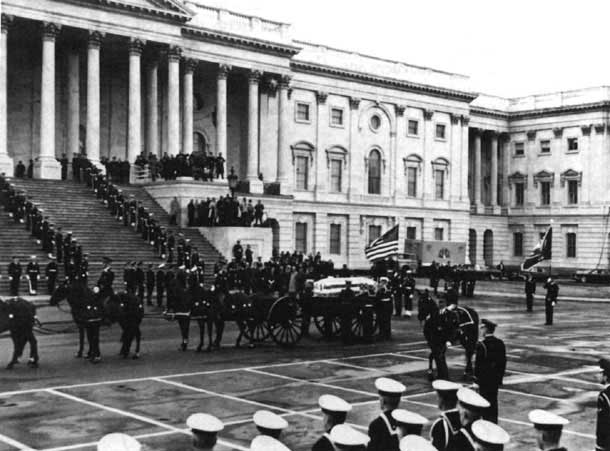
The program publishes horses ready for retirement to a Website, identifies potential adopters, and selects the best candidate. The specifics of the Caisson Horse Adoption Program is governed by October 14, 2014, The Old Guard Regimental Policy Letter #17 � Caisson Horse Adoption. Details are found at Caisson Horse Adoption Application to be sent to usarmy.jbmhh.mdw.mbx.tog-pao@mail.mil. In the most recent cases of Kennedy and Quincy, the press became involved, thousands of individuals posted messages, and 25 families applied for each horse showing a willingness to accept quite a responsibility. A vigorous vetting process is undertaken including site visits after review of the extensive questionnaire responses.
These huge, valiant proficient four-legged soldiers are known as consummate professionals when at work; they hold heads high, remain unperturbed (by flapping flags, cannons and planes, guns, kids, noise and sundry frights), are calm and motionless for hours and diligently perfect the routine of 8 funerals a day.
They must be unexcitable but alert, and have steady nerves. They are bright, clever, occasionally moody, beautiful and often funny, and tend to be playful or mischievous when bored...well rounded soldiers who honor others with their expert precision and presence.
The bonds between these horses, each other and their human associates are extraordinary.
There is much written about the noble horse, but two adages seem appropriate in this context: An old Yiddish proverb states: �The wagon rests in winter; the sleigh in summer; the horse never�; and an old Arabian proverb similarly notes: �The wind of heaven is that which blows between a horse�s ears.�
posted 9/14/16
|
AXPOW is Trying to Preserve Its Heritage; Here's How You Could Help
The American Ex-Prisoners of War organization (AXPOW) is undertaking an ambitious project to preserve and digitize our archives of historical documents, artifacts and images in order to insure their preservation and make these materials accessible to the public in digital form.
Dating back to the 1940s AXPOW has collected and maintained a trove of data, records, artwork, photographs and original documents that tell the story of the capture and internment of American prisoners of war, both military and civilian, through every military conflict the US has been involved in.
Traditionally, the AXPOW organization generates its operating funding solely among members through dues and internal fund-raising. But the cost of this unusual undertaking far surpasses traditional financial resources of the organization and its membership. So we are looking at new funding alternatives, including GoFundMe, to help us complete this preservation over the next twelve months.
Our collection of documents, databases and artwork is of abiding interest to students, scholars, professional researchers and historians, schools, and other educational organizations interested in studying the historical circumstances, treatment, behavior and experiences of POW captives and the long- and short-term effects of their internments.
|
Until now AXPOW could make its archives available to the public in only limited ways, in only one location (Arlington, TX) and only by special arrangement. With the professionally cataloging and digitizing of our collection, we can assure proper handling for preservation, and make our materials widely accessible.
Your financial support will help assure that the AXPOW collection will not be lost to posterity. It will be properly archived, maintained and available to the largest possible numbers of interested students, schools, family members and friends of POWs, and professional researchers.
Your donation — even a modest one — will help bring The American Ex-Prisoners of War association that much closer to its goal of preserving the past legacy of, and the lessons learned from, the service, sacrifices and experiences of America�s POWs.
The American Ex-POW organization (AXPOW) is a not-for-profit, Congressionally-chartered veterans� service organization advocating for former prisoners of war and their families and serving to maintain the legacy of the POW experience and educate others about it.
posted 8/18/16
|
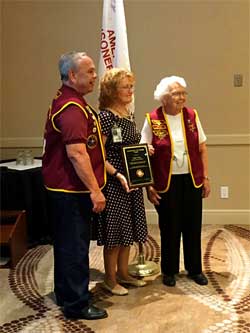
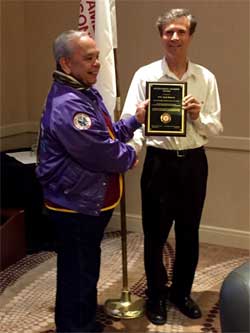
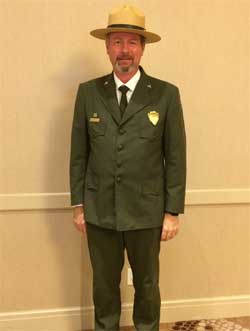
posted 8/17/16
A New Dawn: The VA�s FPOW Committee
by Alice A. Booher
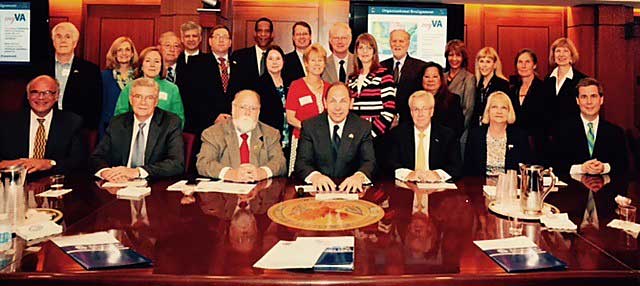
�Committees� have not always had the best of reputations, e.g., the old adage that a camel was a horse put together by a committee. Nonetheless, since President George Washington sought the advice of a committee during the Whiskey Rebellion of 1794, in Washington, the contributions made by such groups have been impressive and diverse.
Through enactment of the Federal Advisory Committee Act (FACA) of 1972 (Public Law 92-463), the U.S. Congress formally recognized the merits of seeking the advice and assistance of our nation's citizens to the executive branch of government.
At the same time, the Congress also sought to assure that advisory committees:
- Provide advice that is relevant, objective, and open to the public;
- Act promptly to complete their work;
- Comply with reasonable cost controls and recordkeeping requirements;
- Were subject to government oversight through creation of the Committee Management Secretariat.
In 1976 the President assigned the Committee Management Secretariat to the U.S. General Services Administration (GSA). GSA�s role under FACA includes annual reviews and record keeping and advising. Any advisory group, with limited exceptions, that is established or utilized by a federal agency and that has at least one member who is not a federal employee, must comply with the FACA.
For several decades we have given readers one or more annual reports from the Former POW Committee (FPOW) that advised the Secretary of Veterans Affairs. A year ago, in the July-August 2015 AXPOW Bulletin, alerted readers to a purportedly imminent move by current Secretary of the Department of Veterans Affairs Robert McDonald, to institute wide-ranging changes to all of the advisory committees. It took a bit longer than anyone might have anticipated, but the decisions have now been implemented and AXPOW is thrilled to share the details.
The DVA Secretary has 25 federal advisory committees (out of the some 1,000 in Washington as a whole established under the FACA). Some of you asked that the names not just the constituencies be identified, so these are the current DVA Advisory Committee Names including 15 that have been established by statute (marked with an asterisk) and 10 nonstatutory panels designed to provide advice on selected VA programs and policies.
- VA National Academic Affiliations Council;
- Advisory Committee on Cemeteries and Memorials *;
- Clinical Science Research and Development Service Cooperative Studies Scientific Evaluation Committee;
- Advisory Committee on Disability Compensation *;
- Veterans� Advisory Committee on Education *;
- Veterans� Advisory Committee on Environmental Hazards *;
- Advisory Committee on Former Prisoners of War *;
- Genomic Medicine Program Advisory Committee;
- Geriatrics and Gerontology Advisory Committee *;
- Research Advisory Committee on Gulf War Veterans� Illnesses *;
- Health Services Research and Development Service Merit Review Board ;
- Advisory Committee on Homeless Veterans *;
- Joint Biomedical Laboratory Research and Development and Clinical Science Research and Development Services Scientific Merit Review Board;
- Advisory Committee on Minority Veterans *;
- National Research Advisory Council ;
- Advisory Committee on Prosthetics and Special Disabilities Programs *;
- Advisory Committee on the Readjustment of Veterans *;
- Veterans� Advisory Committee on Rehabilitation *;
- Rehabilitation Research and Development Service Scientific Merit Review Board ;
- Veterans� Rural Health Advisory Committee ;
- Special Medical Advisory Group *;
- Advisory Committee on Structural Safety of Department of Veterans Affairs Facilities *;
- Department of Veterans Affairs Voluntary Service National Advisory Committee ;
- Advisory Committee on Women Veterans *;
- MyVA Advisory Committee.
The FPOW Committee, as summarized in a memorandum signed March 20, 2012 by then Secretary of Defense Eric Shinseki, is authorized by statute, 38 U.S. Code � 541, and operates under the FACA as amended (5 U.S.C. App. 2).
The Committee�s purpose is to advise the Secretary on administration of benefits under 38 U.S.C. for veterans who are former POWs, and the needs of those veterans in areas of service-connected compensation, health care and rehabilitation; duties include reviewing VA programs and activities and developing recommendations for both administrative and legislative action.
Support to the Committee is through the Veterans Benefits Administration (VBA, the current designated federal liaison officer is Eric Robinson); the committee meets twice a year; and members may include a variety of areas including FPOWs as well as specialists in epidemiology, mental health, nutrition, geriatrics and internal medicine; VA employees may be members, but for the most part, members are Special Government Employees.
|
In January 2014, under the direction of Jeff �Boomer� Moragne, the VA Advisory Committee Management Office (ACMO) (with staffers Jelessa Burney and Rebecca Schiller) was reorganized and expanded to provide administrative oversight and support for all of the VA�s advisory committees.
The ACMO has since held training sessions, and in September 2014 it updated the management guideline for the first time in 11 years. At the November 2014 meeting of the FPOW Committee in Seattle, Moragne briefed the committee on the Secretary�s mandate for a subcommittee charged with providing guidance on several matters within the FPOW committee.
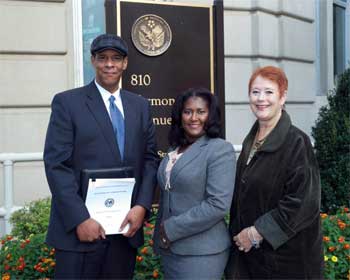
VA Advisory Committee Management Office staffers Jeff �Boomer� Moragne, Jelessa Burney, Rebecca Schiller
The subcommittee, consisting of NamPows Bob Certain and Chair Hal Kushner, and Persian Gulf POW Rhonda Cornum reported back at the Spring 2015 FPOW meeting in Washington with recommendations to include more finite terms, successive term limitations, membership numbers, representation to include having the Director of the Mitchell Center for POW Studies as an ex-officio member, and requiring that a member attend no fewer than 50% of the meetings for reappointment.
The report was discussed by the assembled FPOW Committee (April 27-29, 2015) and forwarded along with the other written recommendations of the meeting to the Secretary for consideration. In May 2015, the Secretary brought in the Chairs for all of his Advisory committees to a unique meeting in Washington; Dr. Rhonda Cornum was invited to participate for FPOW at that meeting.
Considerable discussion followed among the Secretariat, VBA and FPOW Committee members, and the Secretary declared his intent to follow the proffered advice to be given by the VBA and the statutory chain of command.
In February 2016, Undersecretary for Benefits Danny Pimmill made his recommendations, which were signed off on by the Secretary, and letters sent to retiring, ongoing and new FPOW Committee candidates on May 20, 2016, reducing the FPOW membership from 13 to 12. GSA policy prohibits registered lobbyists from serving on an advisory committee, and these appointments have been vetted in that regard.
The Secretary signed off on the following:
- Reappointment of five current members for varying finite designated terms [Bob Certain, Norm Bussell, Tom Hanton, Hal Kushner and Shoshana Johnson];
- Appointment of seven new members for terms from May 20, 2016 to the end of May 2019 [Alice Booher, Bill Richardson, Jeff Moore, Elliott Sortillo, Shirley Quarles, Lane Carson and Joe Milligan];
- Acknowledgment of eight members� expiring appointments (Thomas McNish, Rhonda Cornum, Michael Ambrose, Charles Stenger, Paul Galanti, Earl Derrington, Bob Fletcher and the late Bill Andrews).
- Appointment of a current member as the new Committee Chair. (Reverend Robert Certain has been named to serve as Committee Chair through August 2018. Former FPOW Chairs have included General Flynn, Dick Stratton and Tom McNish).
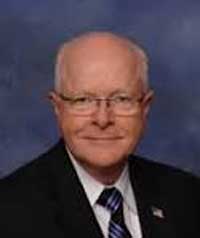
Reverend Robert Certain, current Advisory Committee chair
Advisory committee rules state that a member cannot serve on more than one committee at a time. However, in the past there has been some shared interdisciplinary data along the way. Jeff Moore, Alice Booher and others have observed other committees� meetings; and the former Agent Orange Advisory Committee brought in NamPows as consultants but not members; other FPOW members have attended other committees on a consultative basis.
One current FPOW member, Shoshana Johnson, earlier served on the Secretary�s Advisory Committee on Minority Veterans. And new FPOW appointee Dr. Shirley Quarles has just completed a successful tenure as Chairman of the Advisory Committee on Women Veterans.
The DVA has just issued a Press Release announcing the new membership; and confirming the Federal Registry notice of the next FPOW Committee meeting scheduled for Washington, D.C, on August 16-18, 2016. In future articles, more complete biographies and data on the newly constituted FPOW will be included.
posted 8/8/16
|
A long overdue recognition:
Commemoration honors Vietnam Veterans
VVMF In Memory Progam Honors Veterans Every Year
T
he scene then was vastly different from what today�s returning Veterans experience. It�s time for America to show its appreciation to those who served, especially those who continued to sacrifice long after the war�s end.
As part of the 50th Commemoration of the Vietnam War, VA and 29 states and territories commemorated the anniversary of the final withdrawal of U.S. troops from Vietnam with a day of appreciation celebrated on March 29.
More than 40 years after the war, many Veterans continue to feel the effects of their service. Some battled with Post traumatic stress disorder (PTSD). Others fought illnesses caused by their exposure to Agent Orange and other chemical defoliants sprayed during the Vietnam War.
The Vietnam Veterans Memorial Fund (VVMF) believes their fight should be honored.
VVMF�s In Memory program  honors those whose lives were cut short as a result of their service, but do not meet the Department of Defense (DoD) guidelines to be added to The Wall. honors those whose lives were cut short as a result of their service, but do not meet the Department of Defense (DoD) guidelines to be added to The Wall.
In Memory is a way that all Vietnam veterans can be honored on the National Mall. Every year in June, VVMF hosts the In Memory Ceremony. Loved ones join together on America�s backyard to honor their heroes� sacrifices. They are given the chance to read their veteran�s name and leave a tribute of their veteran at The Wall, next to the more than 58,000 service members who fell in the Vietnam War.
Many families see this as long-overdue recognition for their veteran�s heroism, devotion, and courage.
�The Vietnam soldiers did not get the respect they so richly deserved when they came home from the war. Thank you so much for giving them the �welcome home� that they should have gotten�� - Diana Hamlyn
In Memory began in 1999 and has since honored more than 2,500 veterans.
A plaque that honors these Veterans was dedicated as a part of the Vietnam Veterans Memorial in 2004. It reads: In Memory of the men and women who served in the Vietnam War and later died as a result of their service. We honor and remember their sacrifice.
As we approach March 29 and this Vietnam Veterans Day, take the time to remember those who honorably served. They sacrificed for their country and deserve their nation�s appreciation and respect.
To all of our Veterans we say, �Welcome Home.�
posted 3/13/16
The History of Veterans Day
Department of Veterans Affairs, Office of Public Affairs
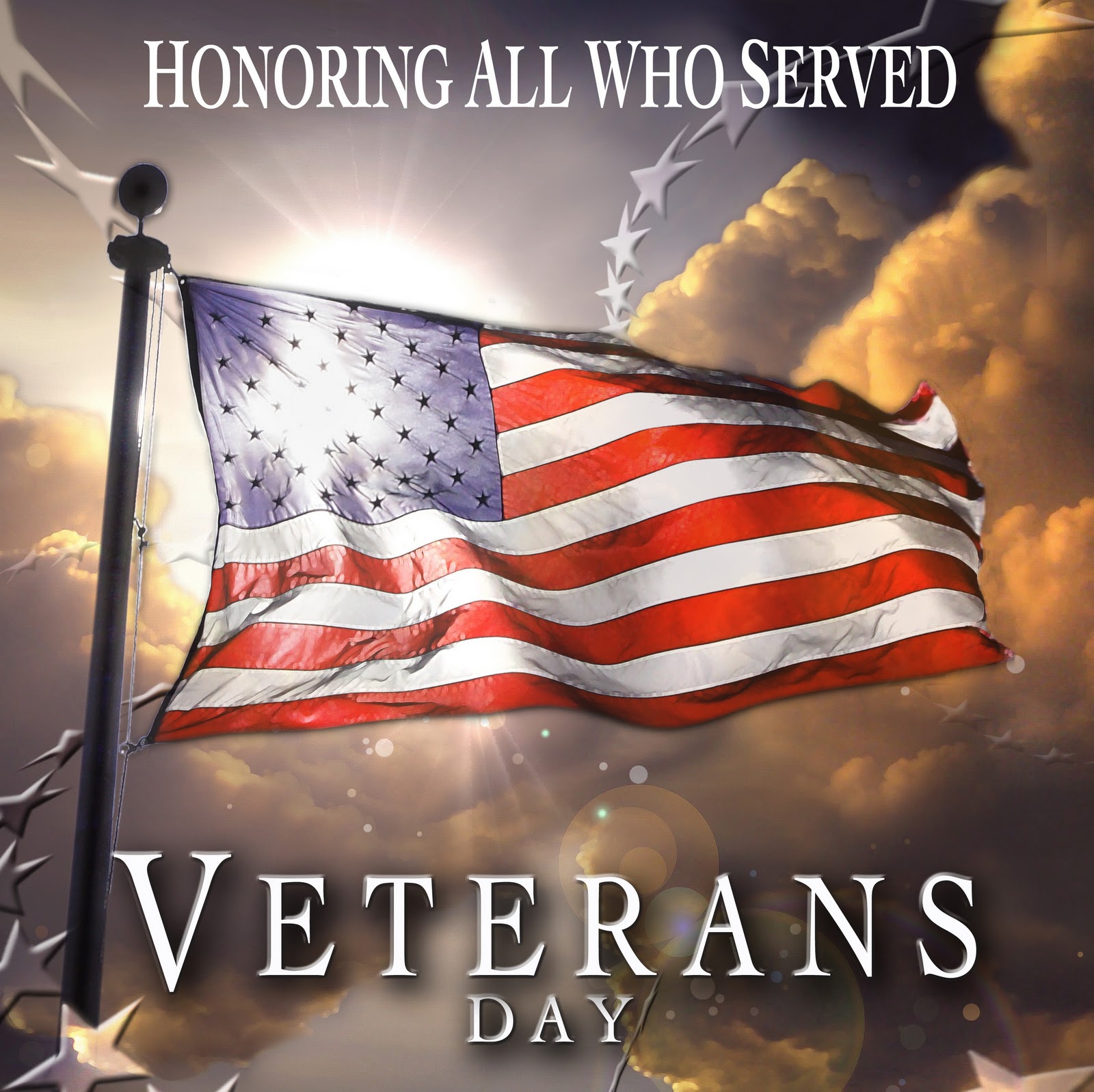
World War I—known in its time as �The Great War�—officially ended with the Treaty of Versailles, signed June 28, 1919 in the Palace of Versailles outside the town of Versailles, France.
However, fighting ceased seven months earlier when an armistice, or temporary cessation of hostilities, between the Allied nations and Germany went into effect on the eleventh hour of the eleventh day of the eleventh month.
For that reason, November 11, 1918, is generally regarded as the end of �the war to end all wars.�
In November 1919, President Wilson proclaimed November 11 as the first commemoration of Armistice Day with the following words: �To us in America, the reflections of Armistice Day will be filled with solemn pride in the heroism of those who died in the country�s service and with gratitude for the victory, both because of the thing from which it has freed us and because of the opportunity it has given America to show her sympathy with peace and justice in the councils of the nations��
The original concept for the celebration was for a day observed with parades and public meetings and a brief suspension of business
beginning at 11:00 a.m.
The United States Congress officially recognized the end of World War I when it passed a concurrent resolution on June 4, 1926, with these words:
- Whereas the 11th of November 1918, marked the cessation of the most destructive, sanguinary, and far reaching war in human annals and the resumption by the people of the United States of peaceful relations with other nations, which we hope may never again be severed, and
- Whereas it is fitting that the recurring anniversary of this date should be commemorated with thanksgiving and prayer and exercises designed to perpetuate peace through good will and mutual understanding between nations; and
- Whereas the legislatures of twenty-seven of our States have already declared November 11 to be a legal holiday: Therefore be it Resolved by the Senate (the House of Representatives concurring), that the President of the United States is requested to issue a proclamation calling upon the officials to display the flag of the United States on all Government buildings on November 11 and inviting the people of the United States to observe the day in schools and churches, or other suitable places, with appropriate ceremonies of friendly relations with all other peoples.
An Act (52 Stat. 351; 5 U. S. Code, Sec. 87a) approved May 13, 1938, made the 11th of November in each year a legal holiday�a day to be dedicated to the cause of world peace and to be thereafter celebrated and known as �Armistice Day.�
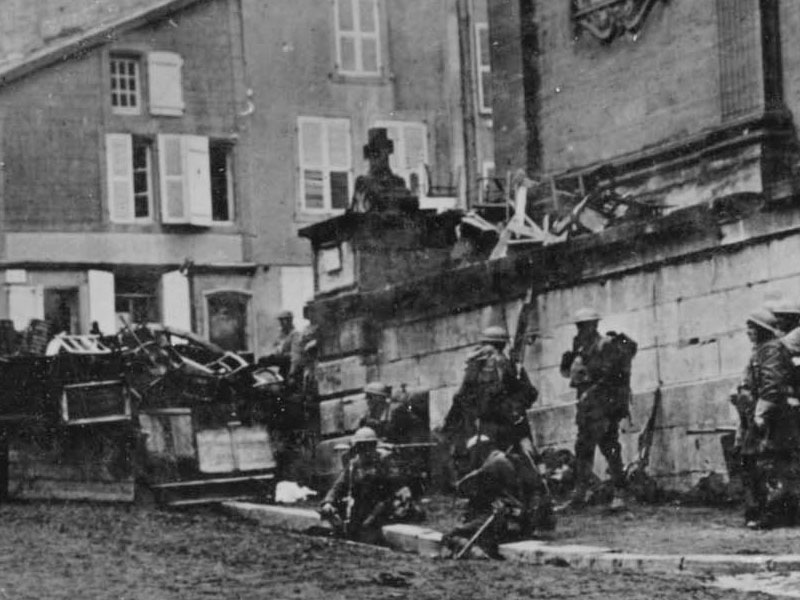
TWO MINUTES BEFORE the armistice ending World War I will take effect, soldiers of the 353rd Infantry wait near a church at Stenay, Meuse in France. This photo was taken at 10:58 a.m., November 11, 1918,
Armistice Day was primarily a day set aside to honor veterans of World War I, but in 1954, after World War II had required the greatest mobilization of soldiers, sailors, Marines and airmen in the Nation�s history and after the Korean conflict where American forces had fought aggression, the 83rd Congress, at the urging of veterans service organizations, amended the Act of 1938 by striking out the word "Armistice� and inserting in its place the word �Veterans.�
Following approval of this legislation (Public Law 380) on June 1, 1954, November 11th became a day to honor American veterans of all wars.
Later that same year, on October 8th, President Dwight D. Eisenhower issued the first "Veterans Day Proclamation� which stated: �In order to insure proper and widespread observance of this anniversary, all veterans, all veterans� organizations, and the entire citizenry will wish to join hands in the common purpose. Toward this end, I am designating the Administrator of Veterans� Affairs as Chairman of a Veterans Day National Committee, which shall include such other persons as the Chairman may select, and which will coordinate at the national level necessary planning for the observance. I am also requesting the heads of all departments and agencies of the Executive branch of the Government to assist the National Committee in every way possible.�
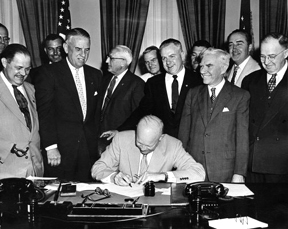
PRESIDENT EISENHOWER signing HR7786, changing Armistice Day to Veterans Day. From left: Alvin J. King, Wayne Richards, Arthur J. Connell, John T. Nation, Edward Rees, Richard L. Trombla, Howard W. Watts
On that same day, President Eisenhower sent a letter to the Honorable Harvey V. Higley, Administrator of Veterans� Affairs (VA), designating him as Chairman of the Veterans Day National
Committee.
In 1958, the White House advised VA�s General Counsel that the 1954 designation of the VA Administrator as Chairman of the Veterans Day National Committee applied to all subsequent
VA Administrators. Since March 1989 when VA was elevated to a cabinet level department, the Secretary of Veterans Affairs has served as the committee�s chairman.
The Uniform Holiday Bill (Public Law 90-363 (82 Stat. 250)) was signed on June 28, 1968, and was intended to ensure three-day weekends for Federal employees by celebrating four national holidays
on Mondays: Washington�s Birthday, Memorial Day, Veterans Day, and Columbus Day. It was thought that these extended weekends would encourage travel, recreational and cultural activities and stimulate greater industrial and commercial production.
Many states did not agree with this decision and continued to celebrate the holidays on their
original dates.
The first Veterans Day under the new law was observed with much confusion on October 25, 1971. It was quite apparent that the commemoration of this day was a matter of historic and patriotic
significance to a great number of our citizens, and so on September 20th, 1975, President Gerald
R. Ford signed Public Law 94-97 (89 Stat. 479), which returned the annual observance of Veterans
Day to its original date of November 11, beginning in 1978. This action supported the desires of
the overwhelming majority of state legislatures, all major veterans service organizations and the
American people.
Veterans Day continues to be observed on November 11, regardless of what day of the week on which it falls. The restoration of the observance of Veterans Day to November 11 not only preserves
the historical significance of the date, but helps focus attention on the important purpose of
Veterans Day: A celebration to honor America�s veterans for their patriotism, love of country, and willingness to serve and sacrifice for the common good.
posted 11/2/15
World War II Fighter Planes Set to Invade Louisiana in October
|
WWII Airpower Expo 2015, with more than 20 legendary WWII aircraft, takes center stage at New Orleans's Lakeview Airport October 23-25
The National WWII Museum and the Commemorative Air Force (CAF) are putting on a three-day display of WWII warbirds in action in New Orleans this month. WWII AirPower Expo 2015 will showcase an expansive fleet of vintage WWII aircraft, including the only flying B-29 Superfortress, giving visitors a rare chance to inspect up close the planes that liberated the skies above the Pacific and Europe.
For those within striking distance, it just might be a sight worth seeing.
Last year�s inaugural expo drew nearly 12,000 visitors. Sponsors say this year's event will offer access to nearly double the number of aircraft, mechanics and WWII veteran pilots, including one of the first heroes of World War II, Lt. Col. Richard Cole.
Cole, now 100 years old, was a co-pilot in the �Doolittle Raid,� a daring airstrike against Tokyo following the Japanese attack on Pearl Harbor.
An extremely dangerous mission, the �Doolittle Raid� called for pilots to take off in their B-25 bombers from the deck of an aircraft carrier, something no one had done before in combat. �The Doolittle Raiders, and all WWII pilots, symbolize the innovation and bravery of our great nation,� explains Stephen Watson, executive vice president and COO of The National WWII Museum. �Lt. Cole is one of only two surviving members of the Raiders � we are so grateful to welcome him, along with numerous other veterans, to the expo to share their stories of fighting for our freedom.�
Texas Raiders B-17G
Lt. Col. Richard Cole will be available Friday, Saturday and Sunday to discuss his experience. Veteran reunion groups, including the 57th Bomb Wing, 90th Bomb Group and Stalag Luft 111 will also be in attendance, among others. Additionally, select veteran attendees will participate in an interview series where guests will have the opportunity to ask questions and thank them for their sacrifice and service.
The 2015 Airpower Expo will also feature CAF�s signature traveling exhibit �Rise Above,� an educational experience comprising a static P-51 Mustang painted in the Red Tail configuration, as well as a film about the Tuskegee Airmen and the obstacles they overcame as they trained and fought as the first African American pilots. The film also tells the story of more than 10,000 other black men and women who trained for or otherwise supported the flight program.
Additional activities throughout the weekend will include cockpit tours, expanded reenactor camps, hands-on history exhibits, veteran meet-and-greets and performances by the Museum�s Victory Belles � a 1940s-style singing trio. Guests will also have the opportunity to purchase tickets for a chance to fly aboard some of the majestic aircraft.
Vintage military aircraft to be featured at the expo include the following.
- B-29 Superfortress FIFI
- B-25J Mitchell
- B-17 Flying Fortress
- SB2C Helldiver
- C-47 Skytrain
- SBD Dauntless
- P-40 Warhawk
- P-51 Mustang
Guests will also be able to view ground vehicles from the Museum�s diverse collection, including a high-speed M-2 Tractor, a Dodge WC-54 Ambulance and an M-3 Stuart Tank.
|

P-51C Mustang
All-access passes and general admission tickets can be purchased in advance through the AirPower Expo website (www.ww2airpowerexpo.org) or by phone (504) 528-1944. General admission tickets will also be available at the entry gate each day. School groups and members of the military enjoy free admission on Friday, October 23. School groups must register with Shelbie Johnson at (504) 528-1944 x425.
Rides on WWII aircraft will be sold on-site at the AirPower Expo. Ride tickets can also be purchased in advance at the AirPower website
T-6 Texan
The Commemorative Air Force honors the men and women who built, maintained and flew in these airplanes during World War II. The organization believes that is best accomplished by maintaining the airplanes in flying condition and by taking the airplanes to the people, allowing them to experience the sights and sounds of the aircraft in flight.
Collecting, restoring and flying historical aircraft for more than half a century, the Commemorative Air Force ranks as one of the largest private air forces in the world. The CAF is dedicated to honoring American military aviation through flight, exhibition and remembrance. A non-profit educational association, the CAF has more than 12,000 members and a fleet of over 160 airplanes distributed throughout the country to units located in 24 states for care and operation. More information can be found at the Commemorative Air Force website.
P-51D Gunfighter
The National WWII Museum tells the story of the American experience in the war that changed the world � why it was fought, how it was won, and what it means today. Dedicated in 2000 as The National D-Day Museum and now designated by Congress as America�s National WWII Museum, it celebrates the American Spirit, the teamwork, optimism, courage and sacrifice of the men and women who fought on the battlefront and the Home Front. For more information, call 877-813-3329 or 504-528-1944 or visit the National WWII Museum.
WWII AirPower Expo 2015 Schedule
| New Orleans Lakefront Airport, James Wedell Hangar |
| Friday, October 23, 2015 |
9:00 am - 5:00 pm |
| Saturday, October 24, 2015 |
9:00 am - 5:00pm |
| Sunday, October 25, 2015 |
9:00 am - 4:00pm |
posted 10/6/15
|
Rescue at Los Ba�os: The Most Daring Prison Camp Raid of World War II
by JVC Alice Gollin
Shortly after sunrise on February 23, 1945, elements of the U.S. 11th Airborne Division along with Filipino resistance fighters struck the Japanese prisoner of war camp at Los Ba�os, Luzon, deep in enemy-held territory 40 miles south of Manila. It was a daring air/sea/ land operation to liberate 2,146 civilian internees � mostly American men, women and children held captive for more than three years from the time the the Japanese invaded the Philippines in the days after the attack on Pearl Harbor.
In 1944, with the war going badly for the Japanese, the guards at Los Ba�os had turned more brutal, and prisoners were being starved on orders of the vicious, Western-hating camp commander. Anyone caught escaping—even those returning with food for the hungry—was shot. With medical supplies scarce, prisoners were dying of diseases like malaria, dysentery and tuberculosis.
Then, in February 1945, Japanese soldiers began digging deep trenches near the prisoners� barracks. Many in camp feared preparations were being made for mass executions and burials.
On his return to the Philippines in October 1944, General Douglas MacArthur had been shocked by conditions at a number of POW camps already liberated by his troops. The prisoners were found half-starved and ill-treated; at some camps, recent mass executions had taken place.
In February 1945, with his ground forces still fighting the bloody battle for Manila against entrenched Japanese defenders, he knew it could take weeks or longer to reach Los Ba�os in force and liberate the camp.
�The thought of their destruction with deliverance so near,� MacArthur explained, �was deeply repellent to me.� On February 12th, he ordered the 11th Airborne to carry
out a raid behind enemy lines to liberate Los Ba�os and move the prisoners to safety.
As airborne staff officers went to work planning the raid, the Los Ba�os internees were desperate to get word to U.S. forces about their worsening situation. They knew from reports on a radio smuggled into camp that the Americans had landed in Luzon, and for weeks U.S. aircraft had been flying overhead to and from the battle in Manila. While the
prisoners cheered the flyovers, prayed for liberation, and spoke excitedly amongst themselves about their pending freedom, they shared the same nightmarish worry: Would the rescuers arrive in time?
The internees� executive committee, which had been reluctant to sanction earlier escapes due to the threat of further deprivations, authorized the escape in mid-February of three young men who chanced execution if caught. Their mission: reach U.S. forces and tell them of the need for the speedy liberation of Los Ba�os.
Under the cover of darkness, they crawled beneath double, barbed-wire fences without being spotted by the sentries and disappeared into the jungle.
|
They soon came across a band of armed guerrillas who agreed to take them to American forces. It was a perilous journey of several days by native bancas � canoes hallowed out from the trunk of trees � across crocodile-infected waters and on foot through dense jungles and forests, traveling mostly at night in order to avoid enemy patrols.
The detailed information the escapees provided as to the strength of the Japanese garrison and the location of fences, gun towers, the armory, and other defensive positions, proved invaluable to the 11th Airborne planners.
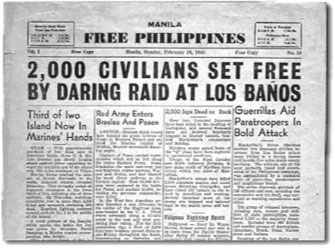 The date of the rescue mission was advanced by several days, and H-hour was changed from 8 a.m. to 7 a.m. after the escapees reported that every morning at 6:45 a.m, the Japanese garrison of some 200 soldiers not on guard duty assembled in a large field—unarmed and wearing only loincloths—for 30 minutes of ritualistic calisthenics.
The date of the rescue mission was advanced by several days, and H-hour was changed from 8 a.m. to 7 a.m. after the escapees reported that every morning at 6:45 a.m, the Japanese garrison of some 200 soldiers not on guard duty assembled in a large field—unarmed and wearing only loincloths—for 30 minutes of ritualistic calisthenics.
The coordinated strike on the camp by 170 paratroopers and 75 guerrillas was designed to use the element of surprise to overwhelm the guards on duty before they could take hostages or harm the prisoners.
The challenge for the liberators was not only to keep the civilians safe during the assault but to move them quickly—and many were too weak to walk any distance—before a 10,000-man Japanese infantry division lurking nearby could show up with reinforcements. Planners believed the force could reach the prison camp in as few as three hours. Casualties were anticipated to run as high as 30%.
A plan to load the prisoners into trucks and move them by armed convoy to U.S. lines was shelved when a reconnaissance flight found that bridges along the route had been blown up by the Japanese to slow the U.S. advance into southern Luzon.
That meant there was only one way out: across the largest lake in the Philippines—25-mile long Laguna de Bay—via amphibious tractors,,which could each hold about 30 passengers. Since there were not enough of the vehicles available to carry everyone across in one trip, it would take two round trips by 60 amtracs over a period of about five hours. During that time, the paratroopers would have to hold the camp and protect the prisoners from further harm.
Rescue at Los Ba�os, a new nonfiction book by #1 New York Times bestselling author Bruce Henderson, tells the timeless story of a group of prisoners of war of all ages and both genders who overcame unbelievable hardship with courage and resilience, and of the young American and Filipino fighting men who risked their lives to rescue them.
The Los Ba�os prison camp raid—forerunner to today�s Special Operations—is considered the most successful airborne operation in history, and is still taught at our nation�s military academies and war colleges.
�I doubt that any airborne unit in the world will ever be able to rival the Los Ba�os prison raid,� General Colin Powell told surviving participants of the raid nearly half a century later. �It is a textbook operation for all ages and all armies.�
February 23, 2015, was the 70th anniversary of the Los Ba�os prison camp raid.
About the book: Rescue At Los Ba�os: The Most Daring Prison Camp Raid of World War II By Bruce Henderson, William Morrow/An Imprint of HarperCollins Publishers ISBN: 978-0-06-2325068; Hardcover price: $27.99 Also available in E-Book, Large Print Paperback, and Audio Book.
posted 5/17/15
|
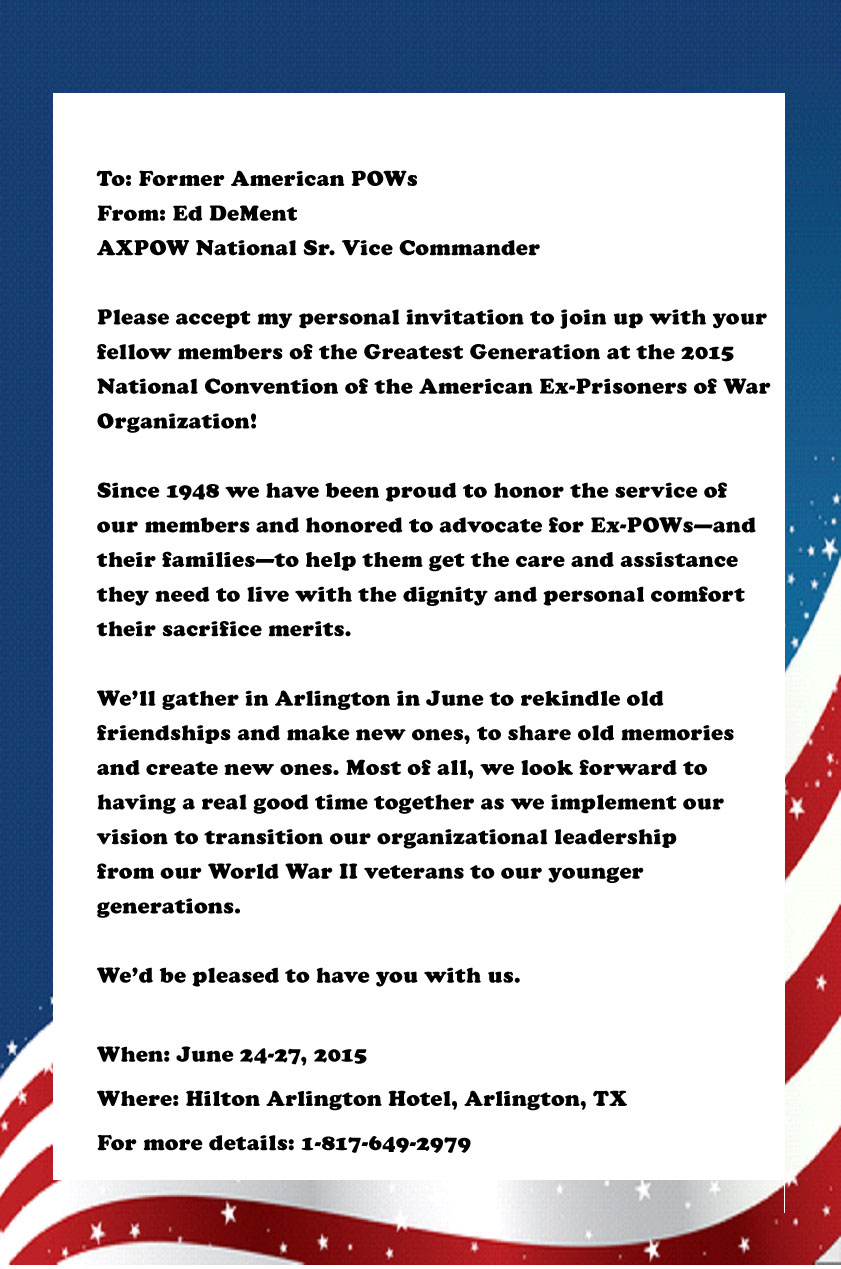
Statement of Charles Susino, Jr., Past National Commander/Legislative Officer of the American Ex-Prisoners of War Before the Committees on Veterans' Affairs U.S. Senate/U.S. House of Representatives, March 18, 2015. |

AXPOW National Commander Charles Susino, Jr. Chairmen and members of the House and Senate Veteran�s Affairs committee and guests, my name is Charles Susino Jr., Past National Commander of the American Ex-Prisoners of War. I am honored to provide testimony and welcome the new committee chair and members.
A lot of positive work has been done over this past session of Congress addressing the needs of the veterans. We extend our gratitude for your efforts. Looking forward, several pieces of legislation need to move through Congress and those in place must be implemented effectively. On each such initiative there are several phases required to provide the necessary needs for the veteran. It is to identify the need and accurately develop legislation targeted to address the need. Once passed by Congress, effective implementation is necessary for the veteran to realize the benefit. All three phases are critically important and too often it is this last phase that falls short. This is true for both recent laws and ones that have been on the books for years. We have access and communication with members of Congress however to insure the implementation phase is achieving the desired results, our suggestion would be to provide formal, structured access by the service organizations to the top VA management including who direct the implementation side.
VA Efficiencies and Accountabilities We have confidence in Secretary McDonald in addressing head-on the many weaknesses of the VA system. As a former chief executive officer, an army veteran, and a father-in-law who was a WWII prisoner of war, we believe he has the back ground, understanding, and leadership to raise the VA to the level of performance required to meet our needs. We support the Secretary�s efforts to reorganize the VA and obtain better access and understanding for the veteran without compromising efficiencies and accountabilities. We ask for your part that the oversight includes the kind of metrics that can measure if gains are being realized. We caution however in establishing a customer service organization as he suggests not to remove resources from the service providers, in the end they provide the care and treatment to the veterans. A key metric is the ratio of VA employees directly providing treatment and care to the veterans divided by the total number of VA employees, therefore the higher the per cent age, the better organizational efficiencies and lower overhead. Stated another way, you want a higher number of care and treatment providers and a lower amount of administrative personnel. Lastly, metrics that are leading indicators are most desirable. We support him however we, the service organizations, and you, Congress, need to hold the Secretary and the VA organization accountable. That requires close interaction and performance monitoring. Congress and the President must establish goals and expectations of performance and timeframes that are aggressive.
H.R. 454: Military Retiree Survivor Comfort Act A newly drafted Bill, H.R. 454: Military Retiree Survivor Comfort Act resides in committee. It is targeted to address an injustice to the surviving spouse of a military retiree. Under current law, the month the veteran passes away; their pension is rescinded from the individual�s account. So at the worst time, while the spouse is grieving, money is being removed from their bank account because the veteran did not live the entire month. We believe this is inexpensive to resolve and shows the compassion deserving of the grieving spouse. Anecdotal evidence with other organizations providing a pension reveals the last month�s check is retained and we believe our military retirees deserve the same consideration. In 1996 Congress voted to allow survivors to retain the veterans� last month pay for VA disability and pension payments. The military retiree survivors should have the same consideration.
HR 4741 Surviving Spouses Benefit Improvement Act of 2014
In the last Congress, HR 4741 Surviving Spouses Benefit Improvement Act of 2014 was introduced to address issues related to the Dependency and Indemnity Compensation [DIC] payable to the surviving spouse. Currently, an eligible surviving spouse would receive a basic DIC benefit of $1,215 monthly. This is 41.0% of the basic compensation rate for a veteran with a spouse receiving disability compensation at the 100% disabled rating. This has called into question the adequacy of DIC payments. In comparison to most other government programs, the spouse would receive approximately 50%, still a hardship when the family income is reduced by 50% yet most costs remain. We ask that the new Congress revisit this issue. You will find through research that some form of DIC has been in effect since the early years of our country�s formation.
Clay Hunt Suicide Prevention Act
A long standing concern has been the rate of suicide of returning veterans. Many veterans returning from service overseas struggle with depression and post-traumatic stress disorder. As a result, an estimated 8000 veterans take their lives each year which equates to a per cent age far exceeding the rate of the general population. We applaud the Congress and President for signing into law the Clay Hunt Suicide Prevention Act. We ask that Secretary McDonald and Congress oversee the implementation and determine if it is achieving the desired results and if not, act promptly to make the necessary changes.
H.R. 526, the "Furthering Asbestos Claims Transparency Act
The "Furthering Asbestos Claims Transparency Act", or the "F.A.C.T. Act" as it is being called, was introduced in the U.S. House of Representatives at the end of January. It is being pushed by the defendants and corporations� trade associations in order to make it more difficult for victims to receive the compensation they are entitled to. Following the death caused by asbestos related illness, families desperately need to promptly receive the compensation for their medical and other costs. As you are aware this military exposure was concentrated in the Navy where asbestos was commonly used for pipe insulation throughout the navy vessels. Asbestos has been banned for over 40 years however exposure to this deadly material impacts its victims years later, so to create a law at this time to restrict in any way just compensation is wrong for the victims, wrong for the military veterans and wrong for America. There is no debate as to the negative impacts on health and we ask that you take a strong stance against this act.
Homeless Veterans
A troubling statistic is the amount of homeless veterans that exist in our country. The VA has stated in a directive that it is targeting to eliminate homelessness by the end of 2015. We ask that the Secretary report on the progress of this initiative and what if any corrective actions are being taken to achieve this goal. It is a disgrace that any American veteran has no place to call home.
POW/MIA Commemorative Chair
We are proud of the many military memorials throughout our country, at the federal, state and local levels that honor those that have served our country. It is an ever present reminder to the public of the sacrifices of our military men and women to preserve America�s freedom. Fewer memorials however, make it visually clear of the pain and suffering of the veteran and their families especially those that were lost and or imprisoned as a result of battle. We ask for your unified support of HR 5391 and S. 2053 authorizing the installation of a POW/MIA commemorative chair on the Capitol grounds. With such a highly visible location and modest costs, the Chair would promote the honor, respect, and individual and family suffering as a result of conflicts for the many tens of thousands of veterans since WWII.
Advanced VA Appropriations
In Washington, there is a never-ending struggle regarding appropriations within the government each year. We again ask for the simple change in procedure to provide advanced appropriations for VA health care and discretionary and mandatory accounts. To put this category of costs in the cross hairs of political debate each year is wrong and should be corrected with this procedural change.
Civilian Detainees
During wartime, there have been civilian detainees held in enemy prison camps, often side by side with our military prisoners of war. In fact, they were often individuals working on government contracts building facilities for the military which lead to their capture. To date, they do not receive any compensation nor health benefits resulting from their imprisonment. Overtime, the numbers of these individuals has reduced dramatically yet, there is time to do the right thing and include them within the VA healthcare system. This is deserving treatment for those civilians imprisoned because they were supporting our military operations. We ask that you take action to correct this long overdue injustice.
Special Groups Of Veterans
This is a long-standing subject for our veterans who faced the enemy. Back in 1986, Congress and the President mandated VA health care for veterans with service connected disabilities as well as other special groups of veterans. Almost thirty years ago, it included veterans up to WWI and we ask the special groups to be revisited and updated to include WWII, Korea, Vietnam, Cold War, and our recent conflicts in the Middle East. Congress should examine ways to accomplish this without compromising those veterans with service related disabilities.
Thank you for allowing me the opportunity to appear before you on behalf of the American Ex-Prisoners of War to share our input to the 113th Congress.
God Bless Our Troops
God Bless America
-----Remember-----
Thank you
March 18, 2015
Joint Hearing: Legislative Presentation of the American Ex-Prisoners of War before the House/Senate Veterans Affairs Committees
|
Impossible Situations; Valor to Match:
True stories from AXPOW members' actual personal files
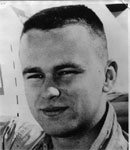
Paul Galanti Commander, US Navy)
�Once we were together in Hanoi -- up to 50 POWs bunked in 60' by 20' cells -- we organized a structured learning environment. We held classes in every conceivable subject: French, Spanish, German, Russian, math, architecture, engineering drawing, even music. They were taught without benefit of books, audio-visual equipment or teaching certificates, but the instruction was effective. Three enlisted men, who had no college training prior to capture, passed more than 100 semester hours of college-level validation exams on their return.�
Excerpted from one of hundreds of AXPOW member bios to be found on this site at the "Biographies" link. Click here to see more.
Survive, Evade, Resist, Escape: Lessons Taught and Learned
by Alice A. Booher
It must be stipulated that many of those reading this article literally �wrote the book� and/or �taught the course�; some helped in adaptations, improvements and redevelopment of the SERE programs in accordance with the �lessons learned� in their own captivity.
This is not intended to diminish those experiences but to explain the premise, and to a limited extent, share the data with others who may be less informed - with a goal to mutual understanding. There may well be later opportunities for discussing purported shortcomings or potential misuse outside historical military contexts.
SERE is an acronym for a military program that means diverse things, involves multiple levels of training, and has been utilized in a variety of ways. In Great Britain, it stands for �Survive, Evade, Resist, Extract�; in the U.S., it stands for �Survival, Evasion, Resistance and Escape.� In general, it is a program made available by and to the military as well as DoD civilians, and private military contractors, and incorporates survival skills, techniques for evading capture, and the military code of conduct.
Comparable current training in European military is based under NATO STANDAG 7196: The NATO Survival, Escape/Evasion, Resistance and Extraction (SERE) Standard, which: �defines the set of tactics, techniques and procedures that will give isolated personnel the tools to survive in any environment and to evade capture where such a threat exists. Failing that, to resist exploitation by captors and, if the situation permits, escape captivity to finally support their own or assisted recover (extraction) and return with dignity.�
The Americanized version of SERE has never been a static concept; programming has evolved with time, changing circumstances and the collective captive shared learning experience. An article in the last issue of the Bulletin noted that during WWII, some efforts predated a formalized SERE with briefings absent actual training. From late in 1942, a CONUS operational site, Ft. Hunt outside Washington, DC, hosted MIS-X.
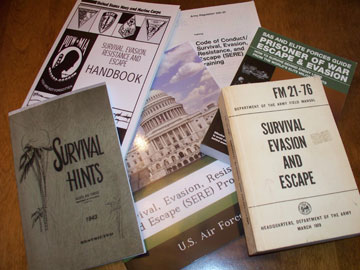
One of the first tools created by MIS-X for US Allied Forces HQ Directorate of Intelligence, SWPA (1943, reprinted 2013), and utilized by the US, Australian, Free Dutch, New Zealand and British aircrews in the Southwest Pacific, was a small pamphlet, Survival Hints. Inserted in aircraft survival kits along with an Australian Army pamphlet �Friendly Fruits and Vegetables,� it was printed in waterproof ink and had a few illustrations. The focus on New Guinea was representational, and covered clothes. equipment, crashing/ bailing out, interactions with natives, jungle travel and camping, sea, jungle and beach foods (e.g., crocodile, kangaroo, wild fowl, cassowaries, rats, bats, cuscus, land snails, large lizards, bandicoots, hornbill, wild pigs), first aid (bites by snakes, leeches, scorpions, centipedes, ants, ticks), and sea survival.
After WWII, SERE training became more refined and texts and booklets were expanded and incrementally more focused. The March 1969 Army Field Manual 21-76 was more detailed, but started with the basic �letter� concept of survival actions if isolated in enemy territory: Size up the situation; Undue haste makes waste; Remember where you are; Vanquish fear and panic; Improvise; Value living; Act like the natives; Learn basic skills. Other manuals have followed, but throughout the stated aim of SERE training has been to provide the skills needed to live up to the US Military Code of Conduct when in uncertain or hostile environments. Since WWII, some eventual POWs received formal SERE training and others did not.
In asking some former American POWs what they found to be particularly efficacious during captivity as adapted from their own SERE training, many agree that �resistance� was both effective and satisfying. Former Vietnam Era POW Giles R. Norrington recently responded that: �The most effective technique was doing anything we could to screw up their propaganda efforts. Dick Stratton�s bows, Jeremiah Denton�s Morse code blinking t-o-r-t-u-r-e. The Nam POWs learned the hard way that name, rank (etc.) would not work. Although the SERE program of the 1960s (had) touched on the importance of �lie, cheat and steal� as a GOOD thing, it was not until we made our inputs (including those of Doug Hegdahl) that the (SERE) curricula were changed to reflect some of the practical realities of resistance during and immediately after effective long-term torture aimed solely at propaganda.�
In fact, since formal SERE training was established by the USAF in the 1950�s, much of the growth and expansion of the SERE training process has taken place as part of POWs giving back coupled with changing needs of the specific services. Navy survival training of the 1950�s started as an arctic survival course which grew by May 1962 to a life-saving course, providing tactics, techniques and procedures. At the Navy SERE�s 50th anniversary in 2012, former Vietnam POW and radar intercept officer Robert S. Fant, Jr., returned to celebrate. After repatriation in 1973 and debriefing, Fant taught at the SERE school from 1974-1977, specializing in resisting interrogation; and after retirement in 1980, went back for another 20 years as a civilian instructor.
Other Nam POWs such as Army�s James N. (Nick) Rowe, with special expertise on escaping, wrote his book Five Years to Freedom in 1971 while still on active duty. Retiring in 1974, he was recalled in 1981 to build the SERE course based on his own POW experiences. Killed in 1989 by members of the New People�s Army, a communist insurgency in the Philippines, the special ops adjunct SERE training compound at Camp Mackall, NC is named for COL Rowe.

All programs include classroom instruction and hands-on field training. It is no cakewalk, but then neither is captivity. It must be noted that military SERE students are screened multiple times to make sure that they are healthy in mind and body. Various programs have different options and foci, all of which are updated for relevancy to the nature of the conflict. In an interesting collateral addendum, SERE Specialists are also now used to analyze in recovery programs and do such things as testing all parachute systems for DoD use.
USAF �s combat survival training at Fairchild AFB, Washington State, was intended to provide air crews the tools to survive, and �Return with Honor.� Created originally for pilots with Southeast Asia and Cold War scenarios, the course now has several short and longer options in various environments. Since 2007, the USAF has had training programs for �asymmetrical warfare,� the post-9/11 world with shadowy enemies, IEDs, kidnappers and using contractors as hostages.
There are post-ejection procedures/parachute landings, nonejection water survival section, joint water survival courses (at Pensacola NAS) and Arctic survival (at Eielson AFB, Alaska).
There are 4 primary (A-D) Levels of any SERE course in part depending on the element of risk. According to urban (and some rural) legend, �mock POW camps� over the decades have realistically masqueraded as many potential venues, physically morphing and periodically including, as needs mandated, assorted buildings, grounds, simulated former colonial prisons, abandoned farms and vineyards, jungle and Quonset huts, caves and tents, medieval stables, modern warehouses, storage units and docks, occasionally stocked with vermin, filth, beasts of burden, smells and sounds of the ethnic locales.
A few current acknowledged locations of military SERE training (some joint) include Ft. Bragg, NC and Ft. Rucker, AL; USN and USMC SERE School at the Navy Remote Training Site at Warner Springs, CA and the remote Marine Corps Mt. Warfare Training Center in Bridgeport, CA, Camp Gonsalves, Okinawa, and Portsmouth Naval Shipyard, Kittery, ME.
The then USAF SERE commander noted in 2007 that while air crews used to be the highest risk of capture, the most vulnerable now are truck drivers, embassy guards and military civil affairs officers. According, the new training components include peacetime government hostage scenarios; resistance training for POWS; and hostage detention in wartime.
Many of you proffer and endorse that POW Navy Seaman Apprentice (E-2) Doug Hegdahl was a singularly innovative genius, whose in-prison �resistance ploys� and perfected tactic of being what the North Vietnamese called �The Incredibly Stupid One� (e.g., involving convincing them he could neither read nor write among other things) became legendary. As later recounted by fellow former POW Dick Stratton, Hegdahl�s actions resulted in his having freedom to roam the camp, sabotage trucks, and eventually take pivotal information to the outside world (and Paris Peace Talks).
|
For many years after release, Hegdahl shared his pragmatic yet creative approach as a civilian instructor at the Coronado SERE facility named for former POW James B. Stockdale. Another former NamPow, radar intercept officer, Cdr Timothy (Tim) Sullivan, who spent 1,945 days in a former French prison, taught at Brunswick SERE School (1983-1994). Fant and Sullivan returned for the 50th USN SERE birthday party (and SERE Museum opening) at Kittery in 2012.
The new relocated (onboard shipyard) Navy Survival School in Portsmouth, NH is named for former POW Jeremiah Denton for classroom training; field and practice work takes place at the 12,500-acre cold weather Ralph Oden (Odom) Training Facility in Redington, ME. As Admiral Denton noted at the dedication of the school in 2010: �Your responsibility as an American war fighter does not end when you are captured. There is much you can do to inflict damage on the enemy.�
Chuck Law, Quartermaster on the USS PUEBLO whose intimate familiarity with torture came at a heavy price as a POW in North Korea, has long instructed Warner Springs (San Diego, CA) Navy trainees, preparing them for blatant and less blatant eventualities, all supervised by Navy medics doing a �Red Cross� inspection. One example of effective utilization of SERE is Scott O�Grady, a USAF fighter pilot shot down over Bosnia-Herzegovina in June 1995. In Return with Honor, he recounts evasion in the hostile territory into which he ejected; O�Grady was able to grab a survival bag from the wreckage, run, hide, blacken his face with dirt, eat leaves, grass, and assorted bugs and collect rainwater with a sponge in plastic bags, surviving until rescue by the U.S. Marines.
The Resistance (Resistance Training Laboratory, often called mock POW camp) portion of SERE is mostly classified, but is primarily for special ops personnel. The program is tightly supervised but assumes participants will be captured by an enemy who does not observe the rules of the Geneva Convention and pushes them to psychological and physical limits. All SERE courses are realistic and flexible, as necessary to be productive, even though the trainees know they will be rescued, a luxury not known to real POWs; trainees become weak from lack of food, frightened from fake bullets and sleep deprived on cold nights, hard ground and absent protection. As recently summed up by Norrington, �Our in-prison goal was to bring reality to the services� training - to break the �train-tothe-last-war� paradigm. For the most part, I believe we succeeded.� SERE training in each service endeavors to perpetuate that positive effort and result.
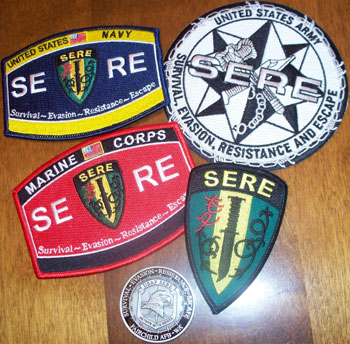
As has been true for some other recent POWs, in 1993 in Somalia, injured Black Hawk Army special ops pilot Michael Durant (as recalled in the movie Black Hawk Down, and his book, In the Company of Heroes), was required to respond to sequentially diverse circumstances, reflecting the increasing phenomenon of �revolving jailers.�
Durant�s captors varied from day to day; first saved from an angry mob by a neighborhood militia leader, Yousef Dahir Mo�alim, they would be stopped by another better-armed band of maverick mooryan which considered him not a POW to be swapped for captured clan leaders but a hostage for whom someone would pay �big� money.
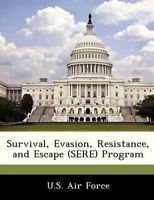
Durant says his immediate fear of being executed or tortured eased but his early mob experience made him fear discovery by the Somali public. Commonsensically, he combined �heads up� from his SERE background (e.g., cultivate your captors, be polite, learn words for please (pil les an) and thank you, (ma hat san-e) with an accelerated on-site lessons-learned curve (e.g, eat whatever creature is cooked, �don�t pick up bullets until they have cooled,� and �run like your hair is on fire�).
Mindful of decades old POW stealth tactics, Durant defiantly scribbling the 4 letters for the motto of his unit, the 160th Special Operations Aviation Regiment on the bottom of a light hearted pizza- craving note delivered by the Red Cross, which was soon acknowledged as received by his wife Lorrie in the media as �As you always say Mike, Night Stalkers Don�t Quit.� Durant credits Army SERE training with saving his life.
In addition to former POWs returning to teach SERE courses, many former POWs have also written widely on their experiences and future POWs have fortuitously been able to stockpile some advance knowledge as a result. In Edgar Hernandez: An Americam Hero (written in 2008 by Jose Martinez and Megan Rellahan), POW Hernandez, [one of the 507th Maintenance Group killed and/or captured as part of the ambush in Nasiriyah, Iraq on March 23, 2003], recalled that as he sat in his cell, woozy after surgery, he read the names on the wall of those who had come before him, and wondered if they included Rhonda Cornum, whose book about her 1991 captivity, She Went To War, he had read in high school.
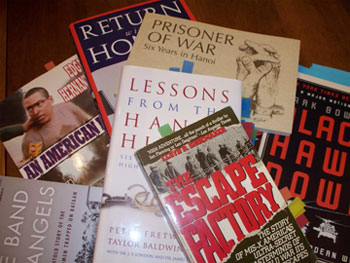
Thus, it is worth noting that while SERE training comes in many forms, the lack of any formal SERE training for both historical and modern combat POWs found and will continue to find ample feasible and utilitarian substitution through the simple use of common sense, creative application and dedication to the mission.
Awareness of one�s surroundings and circumstances may well be key to survival, and application of resourceful courage and sound judgment never hurts. Cornum observes that training may be especially helpful to those who are very young and inexperienced, but the impact of mature thinking skills plus an understanding of the core values can well sustain captivity.
The Code of Conduct and Core values may be reflected in numerous representations by various names, Soldiers or Ranger or NCO Creed - or it may come in the more streamlined version, Army Warrior Ethos: �I will always place the mission first; I will never accept defeat; I will never quit; I will never leave a fallen comrade.�
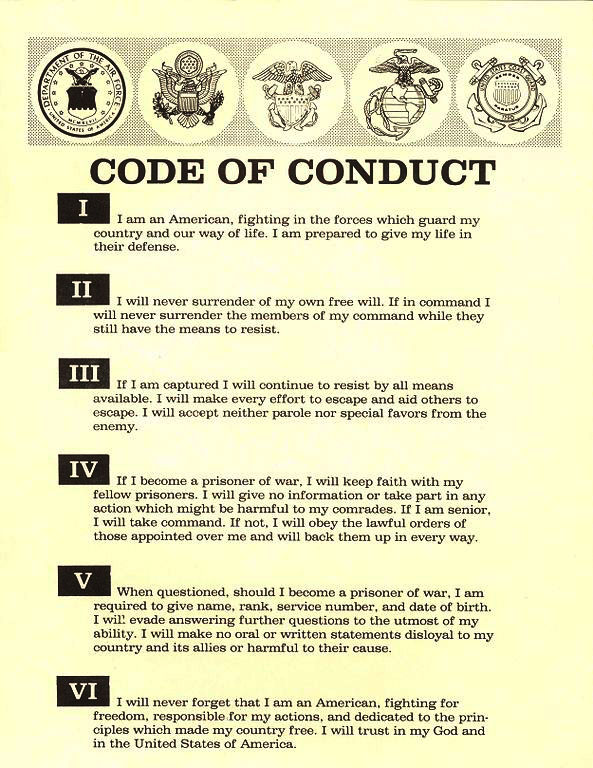
posted 1/12/15
|
AXPOW's Position on Torture
The American Ex-Prisoners of War has always condemned the use of torture to obtain �information� from prisoners of war. We believe that this method of interrogation sets a very bad precedent and offers misguided justification for the same treatment of future American POWs.
We endorse the statement of Senator John McCain, former prisoner of war and AXPOW member.
Sen. John McCain (R-Ariz.), a member of the U.S. Senate who personally knows what it means to be tortured, strongly defended the Democratic-led Senate investigation into the CIA's post-9/11 interrogation program, saying the agency's activities "stained our national honor."
McCain, who was held captive by the North Vietnamese during the Vietnam War, delivered a careful, passionate denunciation of the actions taken by intelligence officials in the years following the 9/11 attacks. The senator declared that Americans have a right to know what was done in their name and in the name of protecting them.
In his Senate floor speech McCain said. "They must know when the values that define our nation are intentionally disregarded by our security policies, even those policies that are conducted in secret," They must be able to make informed judgments about whether those policies and the personnel who supported them were justified in compromising our values; whether they served a greater good; or whether, as I believe, they stained our national honor, did much harm and little practical good."
�I know from personal experience that the abuse of prisoners will produce more bad than good intelligence," McCain said, singling out the tactic of waterboarding in particular. "I know that victims of torture will offer intentionally misleading information if they think their captors will believe it. I know they will say whatever they think their torturers want them to say if they believe it will stop their suffering."
"Most of all, I know the use of torture compromises that which most distinguishes us from our enemies, our belief that all people, even captured enemies, possess basic human rights, which are protected by international conventions the U.S. not only joined, but for the most part authored," the senator added.
Wings of War: Extraordinary Wingmen
by Alice A. Booher
All military aviators will tell you that a good wingman is indispensable and often key to their success � the flyer�s version of �having one�s back." However, many may not realize that some of these wingmen are somewhat smaller that ordinarily considered, and that �wingman� may be a bit more a literal than figurative variety.
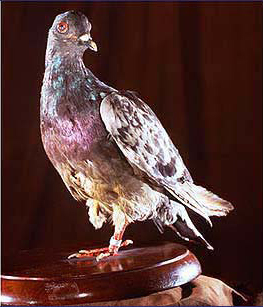
Birds, usually pigeons, have been used in wartime for 5,000 years, early-on mostly only for short distances. By mid-12th century, civilian bird-mail (pigeon post with post offices and postmasters) was a thriving business. Scientists and breeders worked on the hardy little flyers, and by 1819, a trusty swift homing pigeon could fly 200 miles in a day, a skill which greatly expanded its occupational horizons. In the early 19th century, homing pigeons were used in many Belgian cities to bring stock exchange quotes from across the Channel in London. Their use in commerce and war was fast, quiet and dependable.
Heroic bird feats have been praised since Greeks first voiced poetic, and their saving of combatants and civilians became legend. In 1871, during the Franco-Prussian War, the French used hot air balloons to transport homing pigeons behind enemy lines, and microfilm literally flew in a million messages between Paris and London. In 1914, during the First Battle of the Marne, the French army accompanied troops with 72 pigeons. The Brits levied considerable fines for those who would kill, wound or molest the birds.
The U.S. Navy had more than a dozen pigeon stations in WWI, and the birds would fly nearly 11,000 missions after being thrown either up or down (depending on the location of the propellers) out of the aircraft; 11 of them were MIA, but the other 219 birds delivered successful messages. On the first U.S. aircraft carrier, the USS LANGLEY, (commissioned in October 1922), a pigeon house was placed in the stern. Individually the birds worked well, but when they were released as a group, the flock of birds roosted in the cranes of the Norfolk shipyard ending that project.
According to the Army Historical Foundation1, during WWI, U.S. combat commanders usually transmitted messages by wire, but in unfavorable situations, they used pigeons. When the U.S. entered the war in 1917, the U.S. Army Signal Corps had 600 carrier pigeons, provided by British breeders and trained by American soldiers.
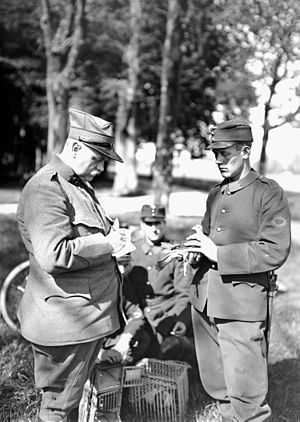
They carried messages on scraps of paper inserted into a lightweight canister attached to the bird�s leg. Once released, the bird would fly to his homing coop behind American lines and a bell would sound. Records show that during the Meuse-Argonne Offensive, 442 pigeons were used to deliver messages in the Verdun area. One pigeon known as �Kaiser� was captured from the Germans, carrying its little camera. Another pigeon known as �The Rocket (Mocker)� served 52 missions before being wounded by the enemy, receiving the French Croix de Guerre and Distinguished Service Cross.
The most famous of the flock may have been �Cher Ami� (a Black or Blue Check cock) who delivered 12 critical messages from the front lines, the most important of which was on October 4, 1918 when fighting was fierce, and a lot of friendly fire was taking a toll. The bird was blinded in one eye, shot through the breastbone and suffered a nearly severed leg from enemy fire, but got the important message through to commanders to �stop shooting at our own folks." Remarkably she survived and made it CONUS but died in June 1919. The colorful taxidermied onelegged bird is at the Smithsonian National Museum of American History �Price of Freedom Americans at War� exhibit along with the Croix de Guerre with Palm that she received from the French.
In WWII, the UK deployed 250,000 homing pigeons, many of whom were
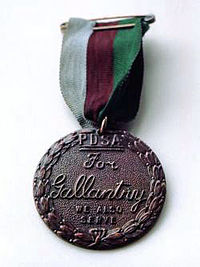 valiant beyond all belief. The British People�s Dispensary for Sick Animals established the Dinkin Medal in 1943 to honor the work of animals exhibiting conspicuous gallantry or devotion to duty while serving in military conflict, and came to be known as the animals� Victoria Cross (although perhaps not by those humans who earned the VC).
valiant beyond all belief. The British People�s Dispensary for Sick Animals established the Dinkin Medal in 1943 to honor the work of animals exhibiting conspicuous gallantry or devotion to duty while serving in military conflict, and came to be known as the animals� Victoria Cross (although perhaps not by those humans who earned the VC).
|
Not surprisingly, the Dinkin would be awarded immediately to three pigeons, and thereafter, to many more birds including an Irish one named �Paddy," and the American Pigeon Service�s �G.I. Joe� (who flew 20 miles in as many minutes delivering a message that saved 1000 lives).
From its inception until September 2014, the award has been made to 4 horses, 31 pigeons, 29 dogs and 1 cat for courageous actions such as bringing the news of landings at Dieppe (�Beach Comber�) and Normandy (�Gustav�); a dog who made 20 parachute jumps in North Africa (�Rob�); for keeping morale high in a Japanese POW Camp (�Judy�) (on which we wrote earlier in the Bulletin); in the Battle of Lye Mun on Hong Kong Island; for leading their owners out of the World Trade Center on 9/11 (�Salty� and �Roselle�); for locating a weapons arsenal in Iraq; tracking nationalists in Malaya; and several for detecting explosives in Afghanistan, some of whom died or went MIA in the effort.
Many Americans first learned of one valiant bird from an unexpected source, a recent Antiques Roadshow in England, hosted by the stylish journalist Fiona Bruce. A visitor had brought a classy rather formal-looking pigeon photo of �Billie," along with Billie�s actual Dinkin medal, and the written certificate for his efforts out of RAF Waddington in August 1945, all now preserved at the Allied Forces Mascot Club. As Bruce quipped, we can probably assume Billie never tried to wear his medal.
During WWII, the use of pigeons might have been further expanded since
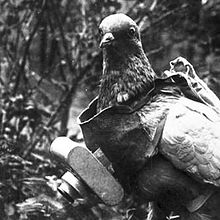 it was reported that they could be trained to deliver small explosives to precise targets, but the British Pigeon Policy Committee nixed the idea. While the Brits phased out the birds by 1948, MI-5 had concern about their continued use by the enemy, and accordingly, 100 birds were maintained until 1950. In 1957, the U.S. Signal Corps transferred 2 hero pigeons to the National Zoo in Washington, �Anzio Boy� and �Global Girl� who had completed 66 missions between them.
it was reported that they could be trained to deliver small explosives to precise targets, but the British Pigeon Policy Committee nixed the idea. While the Brits phased out the birds by 1948, MI-5 had concern about their continued use by the enemy, and accordingly, 100 birds were maintained until 1950. In 1957, the U.S. Signal Corps transferred 2 hero pigeons to the National Zoo in Washington, �Anzio Boy� and �Global Girl� who had completed 66 missions between them.
In 1982, a gentleman living in Surrey, near famed spymaster�s Bletchley Park, found the remains of a pigeon in his chimney. He noticed a small red capsule attached to its leg. The find created quite a stir in Great Britain,
and after much investigation it was confirmed that the content was a top secret encrypted message. Now the problem is to decipher it. 3 The Brits estimate that they used 250,000 pigeons during the war. The proximity of this recent find to Bletchley Park (the home of Alan Turing and the Allied cryptographers, and also the location of the MI-6 pigeon loft) has added cache.

Britain�s top secret GCHQ listening post and decoding department knows it was one of two birds carrying the same message; one suggestion is that it was coming from the site of Allied landings at Normandy since it was found near the HQ of British Field Marshall Bernard Law Montgomery at Reigate right before the D-Day landings. This might make the chimney bird an associate of �Gustav� who brought the first report of the Normandy Landing, after having worked for some time carrying messages for the Belgian resistance.
The Swiss continued their pigeon section until 1996. According to a new book, From Pigeons to Tweets: A General Who Led Dramatic Changes to Military Communications (the autobiography of LTG Clarence E. McKnight told with Hank H. Cox, 2013), when McKnight entered West Point (Class of 1952), the Army was still using the birds on the battlefield including a homing-pigeon equipped signal platoon laying wires during the Korean War. However, as late as 2010, Indian police suspected that a captured pigeon had come from Pakistan.
These remarkable warriors are also commemorated in places such as �Yankee Doodle Pigeon� of the Hanna-Barbera cartoon Dastardly and Muttley in their Flying Machines, and in several British films and games. �Old Sarge� was commemorated in book and film, The Flight 5, recently shown at the Yankee Air Museum in NYC, introduced by Mayor Michael Bloomberg.
In memory and honor of these amazingly faithful warriors, we can remember the words of JM Barrie, in his The Little White Bird: �The reason birds can fly and we can�t is simply because they have perfect faith, for to have faith is to have wings.�
Endnotes
1 Cher Ami- Winged Warrior, National Museum of the U.S. Army, Call to Duty, Vol 9, Issue 1, March 2014.
2 See also http:// pigeon_racings.tripod/com/ wartime_pigeons.html.
3 See George Dvorsky, Remains of WWII military Pigeon Ignites Code Mystery at http://io9.com/5956950/ remains-of-world...;see
also Can You Crack the Code? Spy Chiefs Stumped By Secret Message Found on Leg of Dead WWII Pigeon at http:// www.morror.co.uk/news/uk-news/ codebreakers-stumped, etc.
4 See Fowl Play: Alleged Spy Pigeon Held in India, at http://tribune.com.pk/ story16913/.
5 See http://www.pigeonsincombat/ com/film/html; and www.americanwwii.com/ articlespigeons-of-war
posted 12/10/14
|
Congress Passes, President Signs Veterans Health Care Bill
by Charles Susino Jr., Past National Commander/Chair of the Legislative Committee
Following reports of misconduct at the Phoenix VA concerning veterans on waiting lists and of deaths of veterans who were waiting to receive medical treatment, there has been a lot of activity both within Capitol Hill and the VA across the country.
In Washington, Congressional committee chairmen Sen. Bernie Sanders (I-VT) and Rep. Jeff Miller (R-FL) worked together on a VA Bill which passed Congress prior to the August summer recess. President Obama signed it into law On Aug. 7.
Key components of Bill H.R. 3230, the Veterans Access, Choice and Accountability Act of 2014 include the following:
- Veterans' ability to seek private medical treatment for cases of waiting more than a month for an appointment or 40 miles from a VA facility,
- Approximately $17b in emergency funding for the VA for the next several years,
- Authorization for leasing 27 new medical facilities in 18 states and Puerto Rico,
- Approval to hire additional medical staff,
- Changing the VA culture by providing management authority to fire VA employees who are not performing at an adequate level in serving our nation�s veterans, including a non paid 21 day appeal process,
- Delivery of care to those veterans who have experienced sexual trauma,
- Expanded Scholarship program to include surviving spouses and allow all veterans to qualify for in-state tuition programs under post 9/11 GI bill
- An outside audit to identify efficiency improvements within the VA.
With the components of this Bill addressing many of the VA needs, it is Congress�s responsibility to provide the oversight to ensure the VA improvements are accomplished.
In addition to the new Bill, the Senate approved the nomination of Robert Alan McDonald for Secretary of Veterans Affairs. Mr. McDonald is the former Chairman at Procter and Gamble.
Prior to his nomination, Acting Secretary Sloan Gibson has been busy visiting VA facilities, meeting with Veterans� organizations and Congress, and establishing department priorities.
- Get veterans off wait-lists and into clinics.
- Fix systemic scheduling problems.
- Address cultural issues.
- Hold people accountable where willful misconduct or management negligence are documented.
- Establish regular and ongoing disclosures of information.
- Quantify the resources needed to consistently deliver timely, high-quality health care.
Acting Secretary Gibson addressed Congress on key issues and actions including the following.
- The Veterans Health Administration has made more than 543,000 referrals for veterans to receive care in the private sector � 91,000 more than in the comparable period a year ago.
- VHA facilities are adding more clinic hours, aggressively recruiting to fill physician vacancies, deploying mobile medical units, using temporary staffing resources, and expanding the use of private-sector care.
|
- VA is moving rapidly to augment and improve its existing scheduling system while simultaneously pursuing the purchase of a state-of-the-art system.
- Gibson has directed medical center and network directors to personally conduct monthly inspections, to date, more than 1,100 of these visits have been conducted.
- Gibson has directed a comprehensive external audit of scheduling practices.
- Gibson has personally visited 10 VA medical centers in the last six weeks and plans to continue this practice.
- The 14-day access measure has been removed to eliminate any motive for inappropriate scheduling practices.
- Where willful misconduct or management negligence is documented, appropriate personnel actions will be taken, including in cases of whistleblower retaliation.
- Gibson froze VHA Central Office and Veterans Integrated Service Network Office headquarters hiring.
- VHA has dispatched teams to provide direct assistance to facilities requiring the most improvement, including a large team now working in Phoenix.
- All VHA senior executive performance awards for fiscal 2014 have been suspended
- Gibson sent a message to all 341,000 VA employees, and has reiterated during every visit to VA facilities, that whistleblowers will be protected.
- Gibson has conducted meetings and calls with veteran and military service organizations and other stakeholder groups to solicit their ideas for improving access and restoring trust.
- Gibson has made a number of high level personnel changes.
- VA is initiating personnel actions to hold those accountable who committed wrongdoing or were negligent in discharging their management responsibilities.
With the focus squarely on the VA, little else has been done on other legislative activities for the veterans. Senate Bill 1982, as reported here for the past several bulletins continues to be stalled. According to GovTrack, it gives the Bill a 28% chance of passing. Undoubtedly, the recent problems at the VA have diverted the attention of Congress to solving current issues at the expense of this comprehensive bill. Hearing directly from the voters is critical to rejuvenate Congress�s attention onto passing this Bill. Please contact your Congressmen!
Public attention is necessary in order to encourage Congress to update and expand its list, established in 1986, of �special groups� of veterans who fought in foreign wars eligible to receive VA medical treatment whether or not they are service-related.
Those special groups include only veterans up to WWI. We continue to believe the more recent warriors are deserving and in need especially as they get up in age. We want to keep this issue visible in Washington until action is taken.
posted 8/7/14
|
Andersonville Special Lessons To Learn
by Alice A. Booher
At a very basic level, the concept can be simple: one country goes to war with another country, and during the conflict they take each other�s participants as prisoners, making them POWs.
However, the understanding of the POW experience, even for the POWs themselves and their families and friends, is convoluted and complex, and requires some considerable thought and introspection. To facilitate even a limited comprehension of the POW experience for an �outsider� is difficult indeed, even when there have been exhaustive efforts made to educate through photos or writings, or by preserving the POW camp site or even creating a museum at the location.
Other factors may convolute the effort of understanding, such as the historical context of the captures, e.g., the American Civil War, involving two sides within one nation, often literally pit brothers against brothers
this is a conundrum faced by the Andersonville Historical Site, which encompasses three distinct locations: the 1864-5 prison stockade site, the National POW Museum, and the national cemetery (established on July 26, 1865).
The Museum is located on the site of the most deadly wartime prison on U.S. soil, but it also concurrently examines and interprets the role of POW camps and honors all POWs throughout history.
The cemetery not only shelters the remains of the 13,800 Union soldiers who had been interred there by 1868, but is one of only two cemeteries run by the National Park Service still accepting burials �making it both a historic location and an ongoing and very personal experience.
The imperative goal of conveying insights into such experiences to a demographic at large requires an extra ongoing effort to structure didactic, interactive programs. The Andersonville National Historic Site Long-Range Interpretative Plan, issued in February 2010, delineated realistic but challenging short, mid and long term implementation strategies. As discussed in the March-April 2014 issue of this Bulletin, special current focus is being placed on the Sesquicentennial (150th anniversary) of the Civil War (2013-2015), which is intended to target all ages, constituencies and groups, especially youngsters.
As excerpted from a State of the Park Report, Eric Leonard, Chief of Interpretation and Education at the Andersonville National Historic Site, recently shared with us the problem of interpretative efforts for those young people who visit the Andersonville POW Museum and Site.
Mr. Leonard notes that one of only a few limited points of intersection with youth is through a museum activity called the Junior Ranger program. Accordingly, Andersonville has developed a new Junior Ranger program in the form of a �choose your own adventure� booklet titled Captured! Prisoner of War Story.
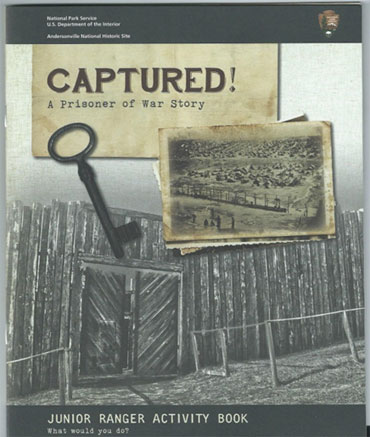
In the past, booklets utilized random activities such as word searches or scavenger hunts, all of which left something to be desired; however, narrative and activities in which the children were participants had more positive impact. Mr. Leonard has this to say about the new booklet.
It propels the visitor through the choices and uncontrollable circumstances of prison life, including features like a maze that either delivers you to a surgeon for treatment or turns you away. We wanted to use activities that kids liked best, but we wanted them to mean something more than a task completed. At the end of the book, they fill out a prisoner memoir to recount their choices.
Children and families are encouraged to explore the park and make educated decisions about prison life. What do you try to smuggle into the prison? Where do you build your shelter? Whom do you trust to mail a letter? Do you try to escape? All of these questions and many more face participants as they explore the park.
Even for an adult, a perusal of the new booklet is a bit intimidating and certainly challenging; it is a daunting task to complete although kids are encouraged to do as much as they can and not feel defeated if they cannot do it all.
The program also requires cooperation of the participating families and a lot of hands-on input from the already extended park staff and rangers. Extra effort has been exerted to take the revolting details of the POW experience and creatively tell a story of the suffering and sadness in a way that will not make a child afraid.
|
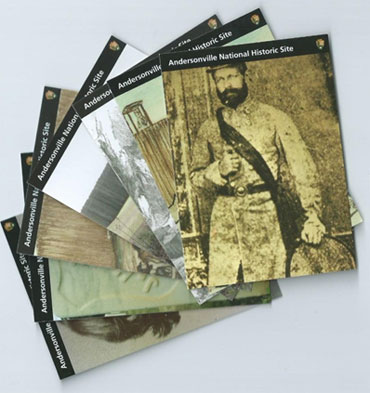
An insightful article prepared by an Andersonville Park Ranger Stephanie Steinhorst, Captured! Interpreting the POW Experience With Children, in Vol. 25, No. 1, (January-February 2014 issue) of Legacy magazine, published by the National Association for Interpretation, explains the reinforcing technique of having a child fail in a task such as looking up a name of a missing POW in a word search.
By engineering the word search so as to have many of the names unlisted, the youngster can share the despair of the POW�s loved one having failed to find that name; this opens up the opportunity for discussion on why and how Clara Barton set up the work of the Missing Soldiers Office in the first place.
The Legacy article, which is part of a special issue of the magazine dedicated to interpreting controversial issues, also notes that while the site is from captivity in the 1860�s, the Museum places focus on POWs from the American Revolution to WWI, WWII, Korea, Vietnam, Iraq and many more. Ranger Steinhorst observes that the POW �experience is one that can either be completely foreign to families without military connections, or intimately terrifying for those who send their loved ones into combat."
The circumstances on which teaching is being undertaken are especially ugly and contentious; the anticipated visceral and intimate responses accordingly require unusual tact and activities above and beyond the usual museum artifacts or films, regardless of the age or awareness of the visitor.
Mr. Leonard informs that a family guide is planned for the Andersonville Museum Exhibits in 2015 so as to have the same kind of resources for parents with the exhibit areas.
[An assessment of how the Andersonville staff is concurrently handling familiarization with the cemetery will be the subject of a future Bulletin article in the near future.]
Another noteworthy new Andersonville initiative, geared particularly to what they found to be the overwhelming nature of kids understanding the impact of captivity, involves individual prisoner narratives for each member of a given guided school groups.
This is a technique that has also been useful at �scary� (intense or brutal) sites such as the National Holocaust Museum and the Titanic exhibit. Ms. Steinhorst notes that with regard to the youth-oriented educational efforts, many parallels have been identified, such as the extreme youth of both the POWs and their guards, that of high school and college students.
As a result, in 2011 Andersonville instituted a Historical Interpreter Apprentice Program, accepted a small number of high school students annually, who meet with staff every Saturday for 8 weeks, culminating in a living history weekend when they portray prisoners and civilians.
This is in addition to the usual reenactments and similar activities surrounding the Site. In association with the programs and the new Junior Ranger booklet, they have small trading cards, similar to baseball or miniature flash cards, featuring a given POW on one side, or a historical detail, and brief reflective data on the reverse.
Other more traditional National Park Service efforts including photos, documents and publications, include lessons developed as part of the Classrooms program. For teachers and parents with children at any age, there are online opportunities including some written by former Andersonville supervisory Park Ranger Alan Marsh, now the NPS Site�s cultural resource specialist, geared to fit into a standard school curriculum. See this link.
Andersonville has also newly expanded its educational efforts to off-site locations, as isnoted in one of the regular columns in a recent Bulletin (March-April 2014, p. 11 - Eric Leonard, Andersonville Cuts The Ribbon on New Traveling Exhibit.
The exhibit is funded through a three-way agreement with AXPOW, Friends of Andersonville and the NPS, and hosted through June by Georgia Southern University. Future venues for the 1,200 square foot thematic traveling exhibit are being arranged by Mr. Marsh, Chief of Resource Management, (229) 924 0343, ext. 115).

posted 7/26/14
|
| Sgt. Bowe Bergdahl, held captive in Afghanistan nearly five years, released |
May 31, 2014 - The only American soldier held captive in Afghanistan has been freed and is in U.S. custody as part of a prisoner swap with Guantanamo detainees, the White House said Saturday.
Sgt. Bowe Bergdahl's release was part of a negotiation that includes the release of five Afghans held at the U.S. camp in Cuba. Bergdahl was transferred to Bagram Air Field, the main U.S. base in Afghanistan, from which he was due to be flown to Germany for treatment before returning to the United States.
The handover operation 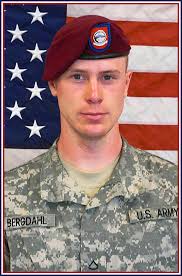 took place close to the Pakistan border, and was conducted in the presence of Taliban fighters, but with no gunfire being exchanged. Bergdahl was said to be in good condition and able to walk during the operation. The exchange was mediated by the government of Qatar, the U.S. confirmed.
A senior Obama administration official told Al Jazeera that talks to secure the release of Bergdahl resumed only recently, but were part of long-standing efforts to facilitate reconciliation with the Taliban. took place close to the Pakistan border, and was conducted in the presence of Taliban fighters, but with no gunfire being exchanged. Bergdahl was said to be in good condition and able to walk during the operation. The exchange was mediated by the government of Qatar, the U.S. confirmed.
A senior Obama administration official told Al Jazeera that talks to secure the release of Bergdahl resumed only recently, but were part of long-standing efforts to facilitate reconciliation with the Taliban.
"Since May 2011 the recovery of Sgt. Bergdahl has been a central element of reconciliation efforts," the official said, adding: "Several weeks ago, an opportunity arose to resume talks on Sgt. Bergdahl, and we seized it. This was an opportunity that only recently became possible."
Officials said the recovery operation was conducted by a few dozen special forces supported by "multiple helicopters, overhead surveillance and reconnaissance." It took place in the presence of 19 Taliban. After being handed to the U.S., Bergdahl was airlifted to Bagram Air Field.
|
Our Pawed Combat Patriots
by Alice A. Booher
For centuries, animals have played pervasive, practical, patriotic roles in military combat operations, from battle to sentries to messengers. Many species have been involved, and we will eventually address some others of these and in several contexts. For now, our focus is on working (combat) dogs.
George Washington reportedly had some 50 dogs during his lifetime, and as was the custom of some soldiers, took one named Sweetlips with him to war. At the Battle of Germantown, Washington spotted a friendly dog, whose collar and tags showed it belonged to British General William Howe. According to the Norton Bulletin of July 4, 2010, Washington via his aide-de-camp Alexander Hamilton scheduled a brief (white flag) truce, slipped a note in the dog's collar, and returned him to a duly impressed and appreciative Howe.
The U.S. officially used dogs during the Seminole Wars. Pit bulls and other breeds were used for protection, sentries, sending messages and guarding POWs during the American Civil War.
During World War I, the U.S. initially only worked with Alaskan sled dogs to pull carts and ammunition up mountains, but later expanded use to sentries, messengers, and as red cross/ambulance dogs who hauled medical supplies.
Many historical references cite hero dogs like Rags, a mixed breed terrier, mascot of the U.S. 1st Infantry Division, adopted out of Montmartre section of Paris, who saved lives in the Meuse-Argonne campaign although he had been bombed, gassed and partially blinded; Rags returned CONUS with his seriously wounded handler after whose death Rags was adopted by the ubiquitous infantry family.
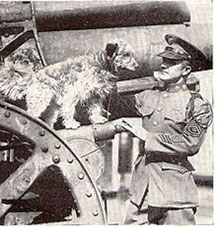
Rags and Friend
A pit bull named Stubby was given the rank of Sgt during WWI when he discovered, captured and alerted Allies to the presence of a German spy.
In WWII, a German Shepherd-Collie-Siberian Husky mix named Chips was highly decorated (and a movie made about uim by Disney in 1990). He served as a sentry dog with the 3rd Infantry in North Africa, Sicily, Italy, France and Germany and at the Roosevelt-Churchill Conference in 1943. His gallant exploits included (while being pinned down on the beach by Italian machine gun fire), jumping into pillboxes, attacking gunners and helping to take 10 Italian POWs.
The U.S. Marine Corps used 549 owner-donated dogs in the Pacific islands during which time the Doberman Pinscher became the official USMC dog. A program called "Dogs for Defense," made up of breeders and trainers, was established and a large number of sentry dogs resulted, some 3,000 of whom worked for the U.S. Coast Guard and military dogs began to be identified as K-9's.
In World War II, a British pointer dog named Shudi (Judy) (born in Shanghai in 1930 and buried in Tanzania in 1950), served onboard Royal Navy's HMS Gnat and HMS Grasshopper. Judy was credited with helping to saves lives following the Grasshopper's sinking, was captured by the Japanese, and made friends with many of her fellow POWs including Frank Williams.

POW Frank Williams and Judy
According to a book by Varley and James and many anecdotal reports, Judy had more lives than most cats: she was sentenced to be killed by the guards, survived the jungles of Sumatra, returned to Britain with Williams where she was registered as a WWII POW and was awarded the Dickin Medal (and collar, now in the Imperial War Museum), considered to be an animal's Victoria Cross.
The Scout program for dogs had been so successful in the Pacific that when the U.S. deployed for the Korean Conflict, some 200 sentry dogs and a scout dog went along. After Korea, the Army dismantled the program to be taken over by the U.S. Air Force primarily as sentries for protecting air bases and missile sites.
According to Historian Harry Summers's The Vietnam War Almanac, all branches of the U.S. military made extensive use of dogs in Vietnam including scouting, tracking, sentry duty, flushing out tunnels and detecting. After being trained at Ft. Benning, they went primarily to Ben Hoa for further training, in-country acclimatizing and then worked countrywide. A recent feature by CNN reported about 5,000 dogs worked in Vietnam with 10,000 servicemen as handlers, and K-9 units said to have saved over 10,000 lives. Of these, 232 working dogs and 295 of their handlers were killed; about 200 dogs were then assigned to other non-CONUS military bases, but many were deplorably left behind as "military surplus" when the U.S. pulled out of Vietnam.

Group Drop
|

Bart
Since the 1970's, the USAF used 1,600 dogs worldwide and still uses them, in reduced numbers, in Afghanistan. A spokesperson from the 37th Training Wing at Joint Base San Antonio-Lackland in Texas, where most military working dogs (MWD) are trained, indicated that there are now about 2,500 MWD serving at home and abroad.
Other sources refer to some Military Contract Dogs (MCD) operated by contractors. In 2000, President Clinton signed a bill allowing military dogs to be adopted; handlers get first choice and 90+% are adopted by former handlers.
Of the adoptions that go to nonhandlers, some go to other careers (e.g., The NY Daily News announced in February 2014 that a German Shepherd, Caesar, with 3 overseas U.S. Army tours was a valued recruit with the NYC police force).
MWD (and CWD) include a wide variety of canine breeds. However, some rather remarkable recent stories include Belgian Shepherd Dogs (Malinois or Chien de Berger-Belge). Malinois, like other Shepherds, are particularly well suited for detecting odors (e.g., from humans, explosives, accelerants, drugs), search and rescue or tracking.
Trained by the Brits and Americans, these dogs are also used by Unit Oketz of Israeli's Defense Forces. One named Posy received the Israeli Medal of Distinguished Service for going into a 6-story collapsed building to locate two trapped Mossad agents; badly injured, she stayed with them until all were rescued.
The Dogington Post website says that there have been 578 Army dog teams in Iraq and Afghanistan and at least 4 MWD's have died since March 2011. Many facilities and units use dogs along with military police. Press stories refer to a military dog named Brad and his handler as being among 38 killed in August 2011 when a special ops helicopter went down over Afghanistan.
U.S. Navy SEALS and other Special Ops groups all train dogs, including Labrador Retrievers and Malinois, and the international press reported that one of the latter named Cairo was part of Operation Neptune Spear, which located, captured and killed Osama bin Laden.
The SEALS, a Pakistani-American translator and Cairo had flown in on two modified Black Hawks (one of which crashed outside the compound walls). Cairo's role was to help clear the building, sniff for bombs and booby-traps, search for false walls or hidden doors and keep the curious at bay.

Cairo
News reports indicated that Cairo had been trained to slide down ropes and jump 5,000 feet with protection of Canadian made K9 body armor with a load-bearing harness for tandem rappelling and parachuting. [Dogs also have Kevlar jackets and other protection and may well carry equipment.]
When President Obama went to privately thank the Naval Special Warfare Development Group team, he asked to meet Cairo (the dog was the only named op member), then being held in another room by Secret Service; the SEALS commander suggested an introduction via Presidential treats.
Another Malinois in recent news is called "Colonel," (whether from his given name or simply his rank is unclear; dogs are given ranks that make them senior to their handlers to ensure that humans treat them with deference; their rank patch is displayed on their body armor). Colonel was purportedly captured from coalition troops operating in eastern Afghanistan in December 2013.
NATO and then the U.S. confirmed a dog went missing at that time without identifying the unit to which he had been assigned; it was later suggested that it was a British special ops unit. A video later surfaced of robed, bearded men displaying specialized M-4 assault rifles with scopes and a captured dog wearing a protective vest, a global positioning devise with a light blinking and a camera.
[A fascinating recent Foreign Policy Journal piece and other associated data on MWD suggest that the more elite of dog assault suits can cost upwards of $86,000. The Blogs Nosey Parker has also noted that the MWD are often equipped with cameras and special doggie night goggles with infrared capability to allow a dog to see heat forms through concrete].
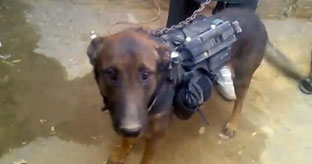
Colonel: MIA
A front page article in The Washington Post on February 7, 2014 noted that a Taliban spokesman said the dog had been captured after a long firefight between coalition forces and the Taliban in the Alin Nigar district of Laghman province, Afghanistan. He noted that the dog had been outfitted with "sophisticated devices ".
A video showed chanting mujahedeen declaring victory in striking down coalition spies by capturing Colonel, now a POW probably held in Afghanistan or Pakistan, and whose ultimate fate has not since been confirmed.
posted 5/12/14
|
|
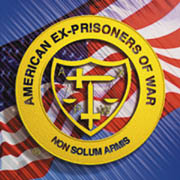










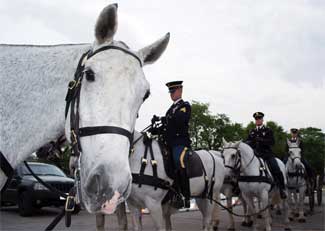



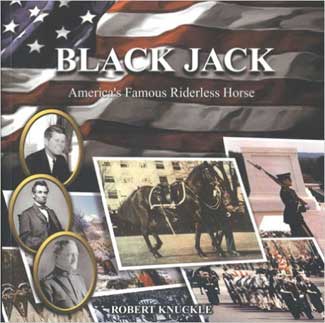
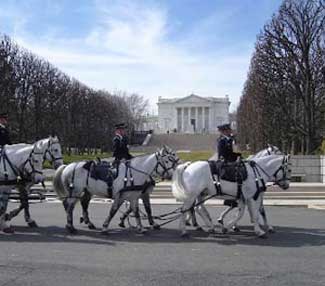
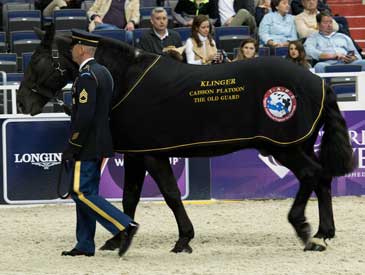




 honors those whose lives were cut short as a result of their service, but do not meet the Department of Defense (DoD) guidelines to be added to The Wall.
honors those whose lives were cut short as a result of their service, but do not meet the Department of Defense (DoD) guidelines to be added to The Wall.


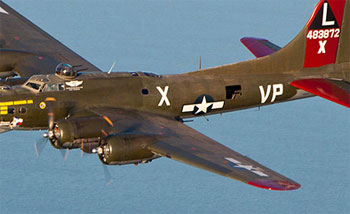


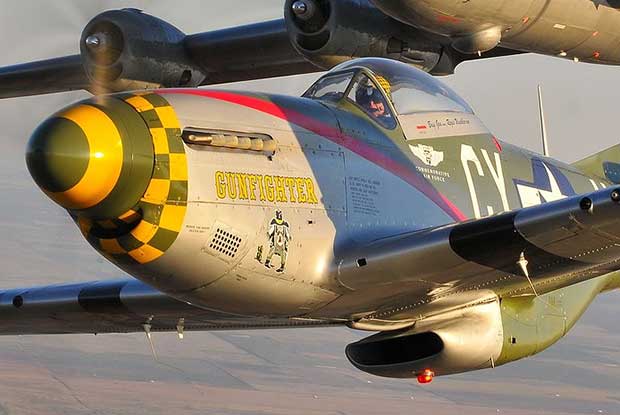
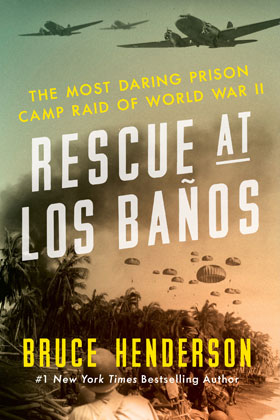
 The date of the rescue mission was advanced by several days, and H-hour was changed from 8 a.m. to 7 a.m. after the escapees reported that every morning at 6:45 a.m, the Japanese garrison of some 200 soldiers not on guard duty assembled in a large field—unarmed and wearing only loincloths—for 30 minutes of ritualistic calisthenics.
The date of the rescue mission was advanced by several days, and H-hour was changed from 8 a.m. to 7 a.m. after the escapees reported that every morning at 6:45 a.m, the Japanese garrison of some 200 soldiers not on guard duty assembled in a large field—unarmed and wearing only loincloths—for 30 minutes of ritualistic calisthenics.


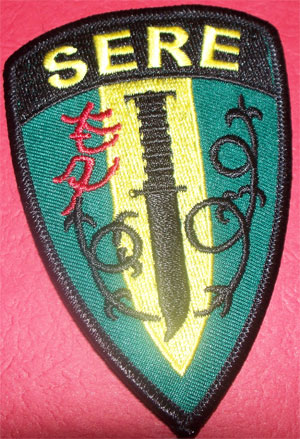






 valiant beyond all belief. The British People�s Dispensary for Sick Animals established the Dinkin Medal in 1943 to honor the work of animals exhibiting conspicuous gallantry or devotion to duty while serving in military conflict, and came to be known as the animals� Victoria Cross (although perhaps not by those humans who earned the VC).
valiant beyond all belief. The British People�s Dispensary for Sick Animals established the Dinkin Medal in 1943 to honor the work of animals exhibiting conspicuous gallantry or devotion to duty while serving in military conflict, and came to be known as the animals� Victoria Cross (although perhaps not by those humans who earned the VC).
 it was reported that they could be trained to deliver small explosives to precise targets, but the British Pigeon Policy Committee nixed the idea. While the Brits phased out the birds by 1948, MI-5 had concern about their continued use by the enemy, and accordingly, 100 birds were maintained until 1950. In 1957, the U.S. Signal Corps transferred 2 hero pigeons to the National Zoo in Washington, �Anzio Boy� and �Global Girl� who had completed 66 missions between them.
it was reported that they could be trained to deliver small explosives to precise targets, but the British Pigeon Policy Committee nixed the idea. While the Brits phased out the birds by 1948, MI-5 had concern about their continued use by the enemy, and accordingly, 100 birds were maintained until 1950. In 1957, the U.S. Signal Corps transferred 2 hero pigeons to the National Zoo in Washington, �Anzio Boy� and �Global Girl� who had completed 66 missions between them.




 took place close to the Pakistan border, and was conducted in the presence of Taliban fighters, but with no gunfire being exchanged. Bergdahl was said to be in good condition and able to walk during the operation. The exchange was mediated by the government of Qatar, the U.S. confirmed.
A senior Obama administration official told Al Jazeera that talks to secure the release of Bergdahl resumed only recently, but were part of long-standing efforts to facilitate reconciliation with the Taliban.
took place close to the Pakistan border, and was conducted in the presence of Taliban fighters, but with no gunfire being exchanged. Bergdahl was said to be in good condition and able to walk during the operation. The exchange was mediated by the government of Qatar, the U.S. confirmed.
A senior Obama administration official told Al Jazeera that talks to secure the release of Bergdahl resumed only recently, but were part of long-standing efforts to facilitate reconciliation with the Taliban.





